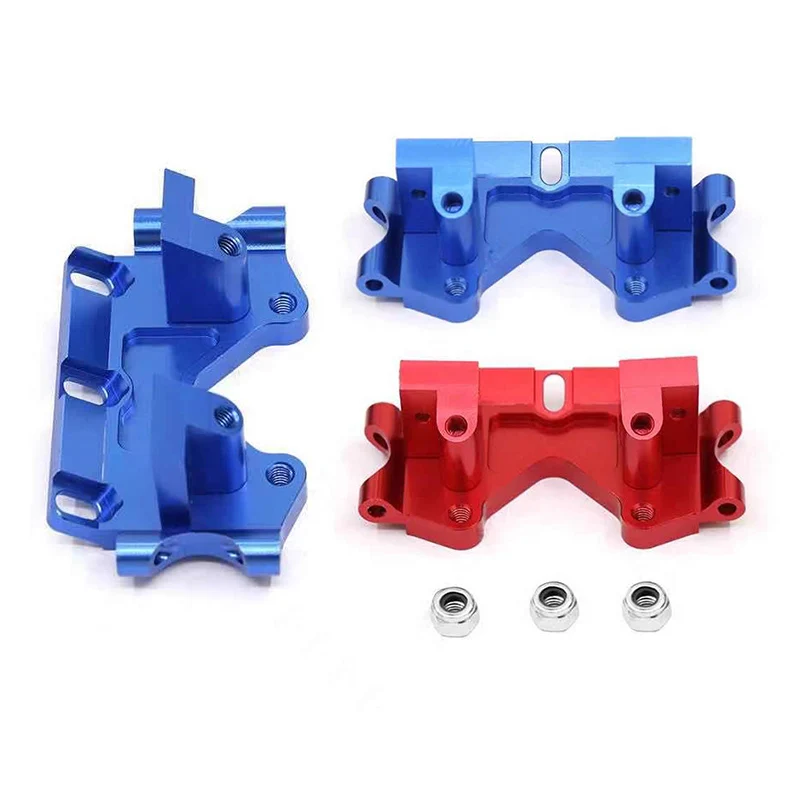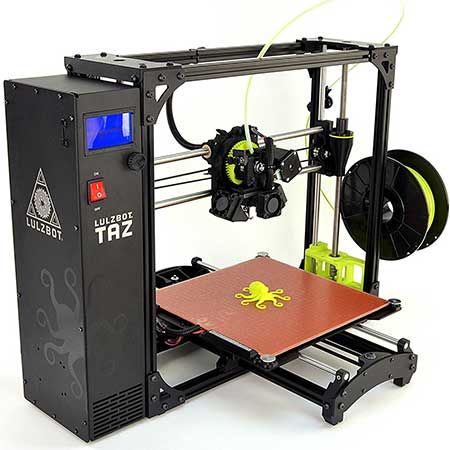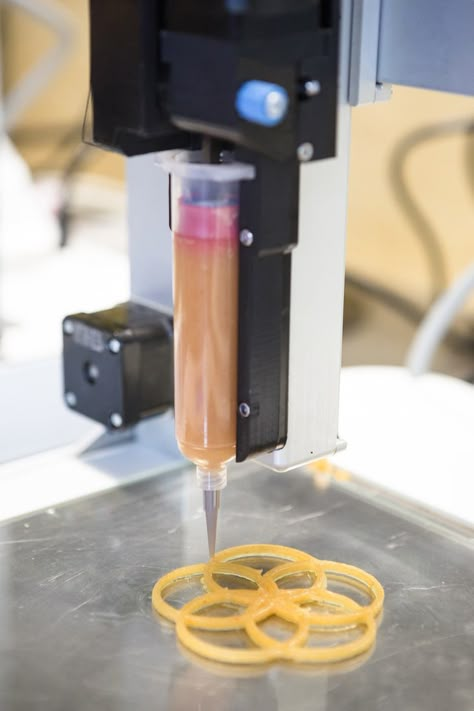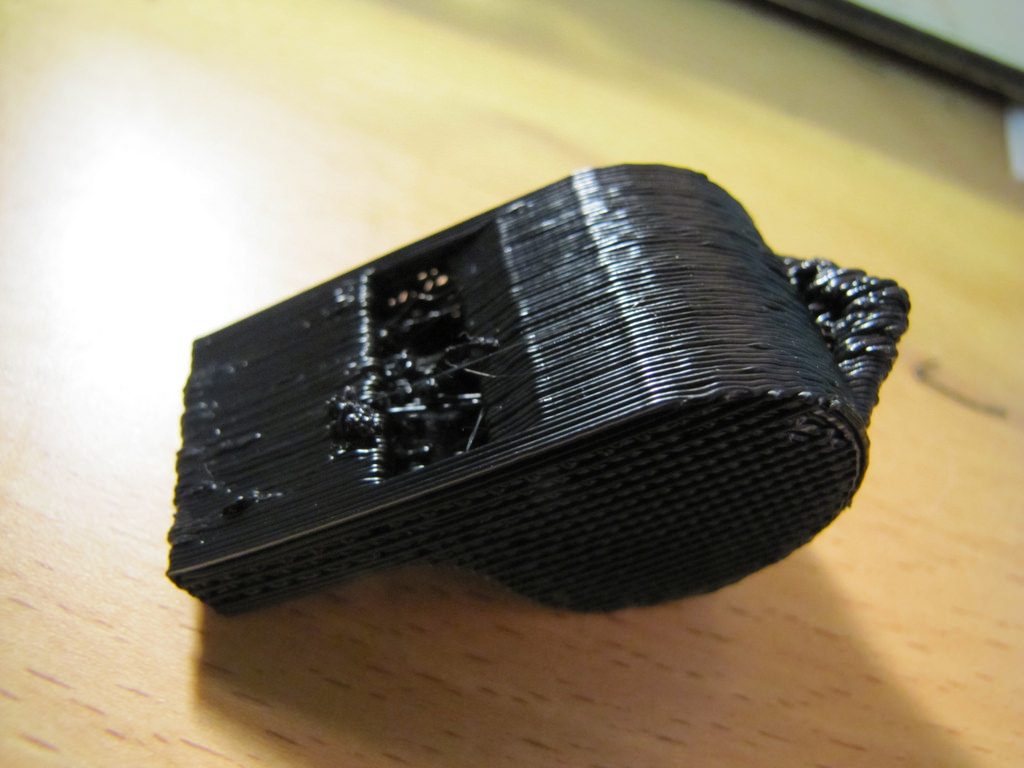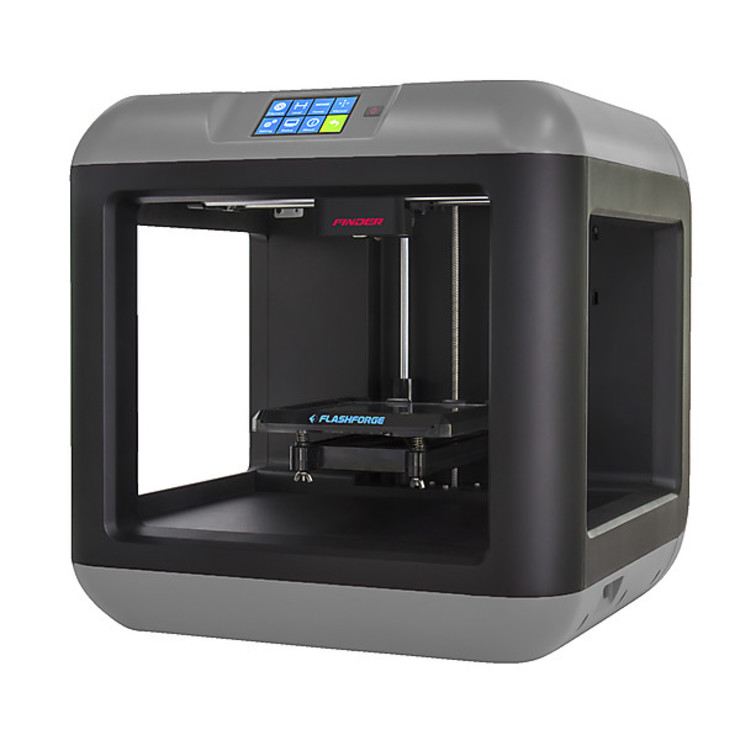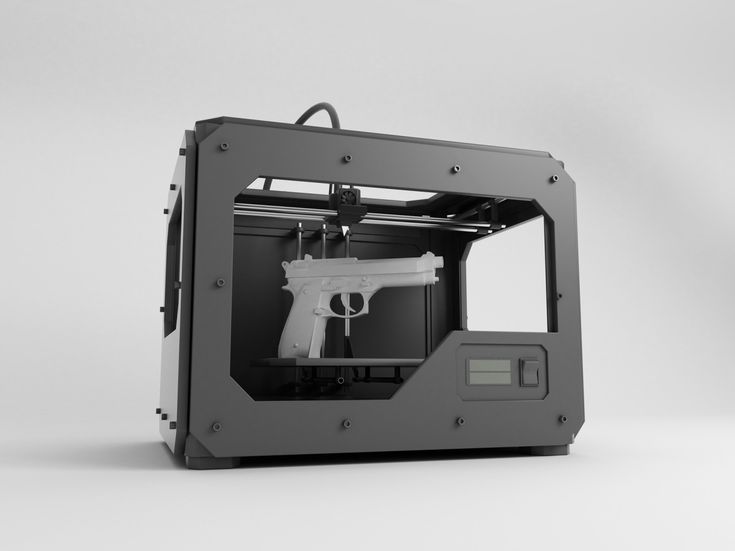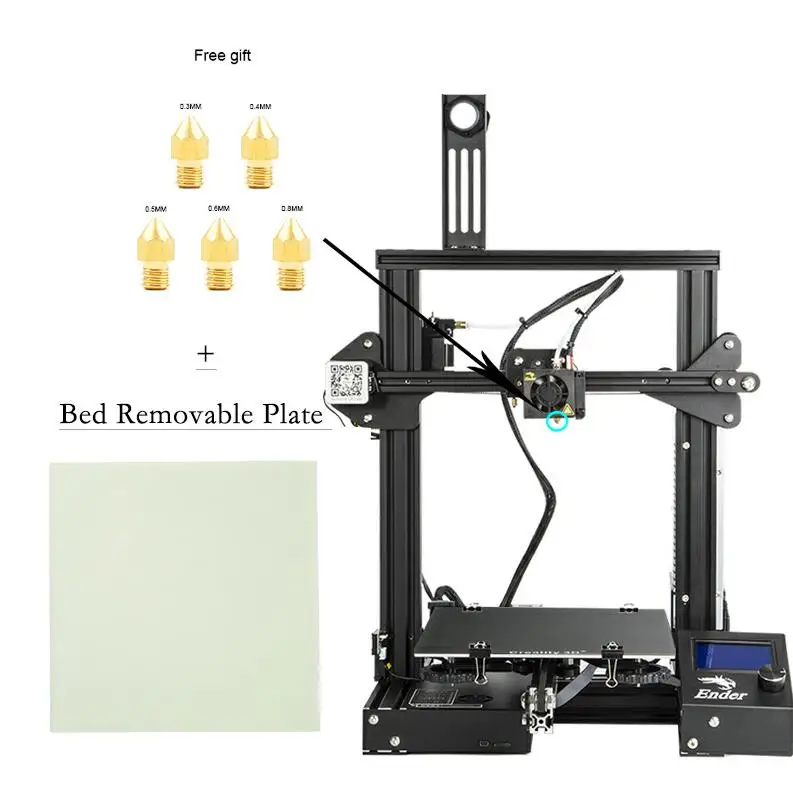Timeline of the 3d printer
The Complete History of 3D Printing: From 1980 to 2022
Some desktop 3D printers are inexpensive nowadays — and they can fit on your desktop or in a microwave-sized corner in your kitchen. However, this wasn’t always the case. For most of the history of 3D printing, these machines were the size of small tents, cost hundreds of thousands of dollars, and were suited only for niche projects.
You may be surprised to know that despite its appearance as a new, innovative technology, 3D printing has been around since the mid-1980s. What used to be just industrial 3D printers the size of small cranes transformed into potentially the solution to organ shortages, the housing crisis, and the democratization of manufacturing, in just 30 years.
The history of 3D printing is a long story, and we felt it was important to include everything relevant to the last 30 years of progress. We split the history of 3D printing into four main parts:
Table Of Contents
- History of 3D Printing Part 1: 1980 – 1995, Inception & early innovations in 3D printing
- History of 3D Printing Part 2: 1996 – 2009, the journey to democratization
- History of 3D Printing Part 3: 2009 – 2014: FDM & SLA patents expire, worldwide democratization of 3D printing
- History of 3D Printing Part 4: 2015 – Present – Metal 3D printing, cusp of major developments in 3D bioprinting and construction
- We also keep an up-to-date ranking of the 15 most valuable 3D printer companies.
History of 3D Printing Part 1: 1980 – 1995, Inception & early innovations in 3D printing
Who invented 3D Printing?
In May 1981, Dr Hideo Kodama at the Nagoya Municipal Industrial Research Institute published details concerning a ‘rapid prototyping‘ technique. This research was the first piece of literature to describe the layer-by-layer approach so intrinsic to 3D printing. His research involved printing photopolymers using a method which preceded stereolithography, and also spoke about cross-sectional slices of layers which lay on top of each other to form the 3D object.
However, Dr Kodama didn’t fulfil the patent application before his deadline and was never granted the patent.
Before this however, there were rumblings and references made to a stereolithography-like process in earlier research paper dating back to the 60s and 70s, and in a 1974 New Scientist column, David Jones, writing under the name Daedalus, actually published a satirical piece that jokingly described the SLA process.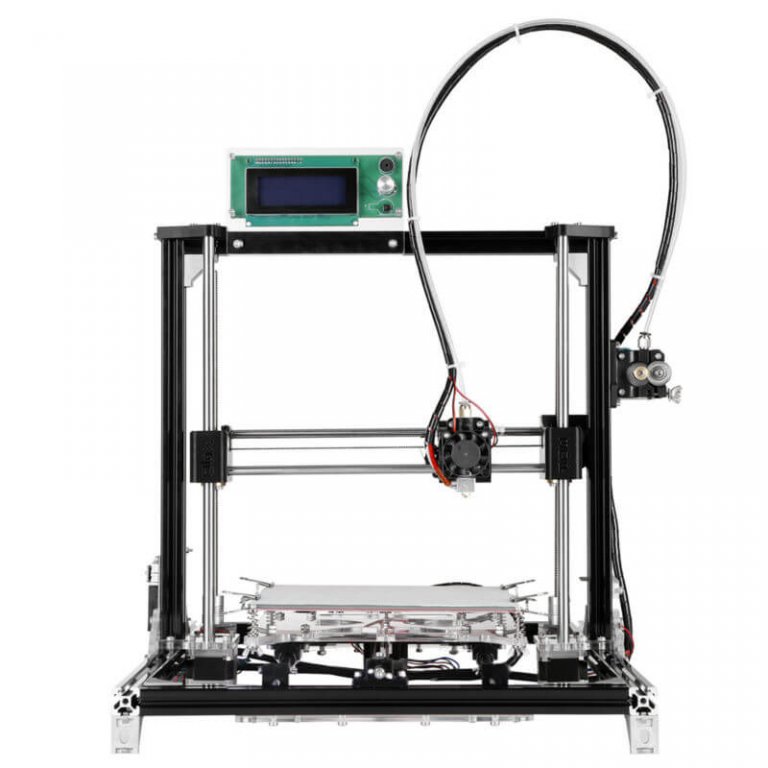
Writing as Daedalus in the 3rd October 1974 edition of New Scientist. Source here.“He basically invented stereolithography with a laser, and invented it as a joke. A joke invention, but this one turned out to work!”
— Dr Adrian Bowyer, Founder of the RepRap movement, which will become important further on in 3D printing’s history.
Instead, we had to wait several more years for the birth of 3D printing. But who invented 3D printing?
1984 – 87: Early History of 3D printing & invention of Stereolithography
Three years later in 1984, three French engineers named Alain Le Méhauté, Olivier de Witte, and Jean Claude André filed a patent for the Stereolithography process. They were to pioneer a new manufacturing process that was to revolutionize manufacturing!
But it wasn’t to be. The three men abandoned the patent soon after they filed it, citing ‘lack of business perspective.’ In hindsight, I’m sure they’re gutted.
Just three weeks after the French engineers, Charles ‘Chuck’ Hull filed his patent for Stereolithography, with new features such as the STL file format and digital slicing.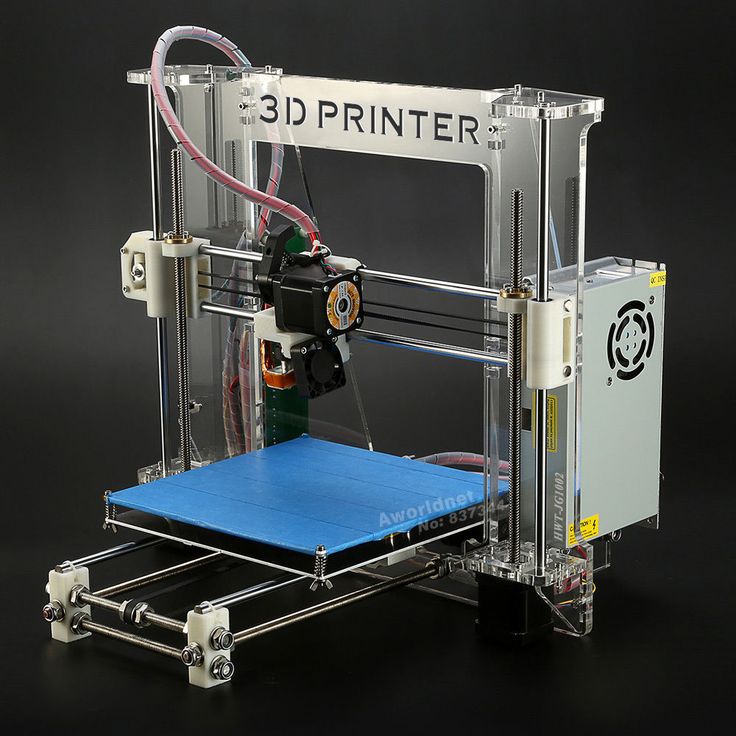 His process used ultraviolet light to cure photopolymers. Since filing and obtaining the patents by 1986, Chuck Hull formed 3D Systems and released the first ever 3D printer, the SLA-1, in 1987. 3D printing was born.Chuck Hull with the first ever 3D printer, the SLA-1. Many agree Chuck is who invented 3D printing.
His process used ultraviolet light to cure photopolymers. Since filing and obtaining the patents by 1986, Chuck Hull formed 3D Systems and released the first ever 3D printer, the SLA-1, in 1987. 3D printing was born.Chuck Hull with the first ever 3D printer, the SLA-1. Many agree Chuck is who invented 3D printing.
It is therefore arguable that either Chuck Hull or Dr Kodama invented 3D printing, though Chuck Hull is credited far more and rightfully so. Ideas are easy, executing them is the hard part.
1988 – 92: Stratasys, EOS, and FDM and SLS to rival SLA
Stereolithography had competition in the 3D printing space however, with rival processes in development. In 1988, Carl Deckard at the University of Texas filed a patent for Selective Laser Sintering (SLS) technology. Instead of using a UV light, SLS used a laser to trace and solidify layers of powder polymers. This innovative new technology was then leased to DTM Inc to use.
Then it became a three-horse race. Scott Crump co-founded Stratasys in 1989 and filed the patent for Fused Deposition Modeling, probably the most well-known 3D printing technology today. 3D Systems and Chuck Hull may have had a head start, but competitors were hot on his heels.The original FDM patent, granted over 25 years ago.
Scott Crump co-founded Stratasys in 1989 and filed the patent for Fused Deposition Modeling, probably the most well-known 3D printing technology today. 3D Systems and Chuck Hull may have had a head start, but competitors were hot on his heels.The original FDM patent, granted over 25 years ago.
This competition was further exacerbated by the founding of EOS in 1989 in Germany by Dr Hans Langer. The German juggernaut would go on to dominate the SLS 3D printer market, as well as pioneer Direct Metal Laser Sintering in the mid-90s.
After the release of the SLA-1 a few years prior, Stratasys released their first FDM 3D printer in 1991. This was the first real competition for 3D Systems, as each had the patent rights to two very different 3D printing technologies. FDM parts were stronger and more chemically resistant, but SLA parts could be created quicker, and more accurately. Who would come out on top?
- For an up-to-date comparison of the two technologies as they are today, check out our comparison of FDM vs SLA.
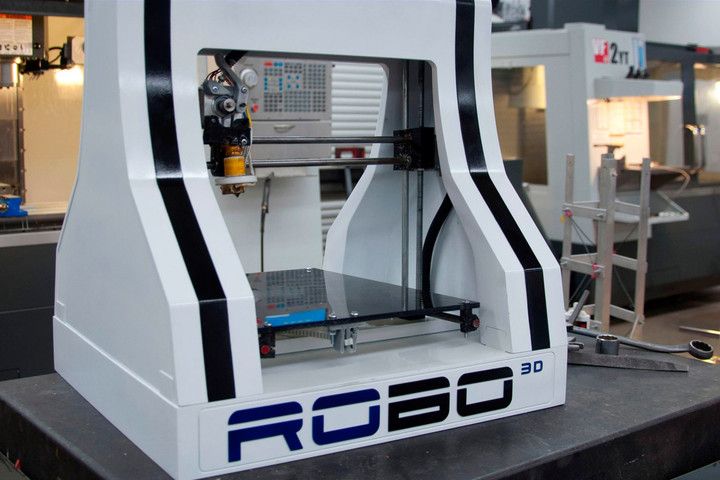
The next year in 1992, DTM Inc brought out their first SLS 3D printer. It is however worth remembering that these machines were behemoths, not the compact and inexpensive desktop machines of today. They competed for industrial prototyping contracts, not to be your Christmas present. Nevertheless, the game was afoot. The three 3D printing technologies, which are still the three main plastic 3D printing technologies, were alive and kicking.
1993 – 95: ZCorp, Color Jet 3D printing, and maturation
Though less known in the modern day, ZCorp were another major 3D printing company back in the early 90s. In 1993, MIT developed a 3D printing technique based on inkjet printers – the ones we use to print in our offices on paper. Adapting this 2D technology for 3D, ZCorp released their first 3D printer, the Z Corp Z402. The technology was originally called Zprinting, though the range are now called Color Jet printers, but the technology is known as Binder Jetting.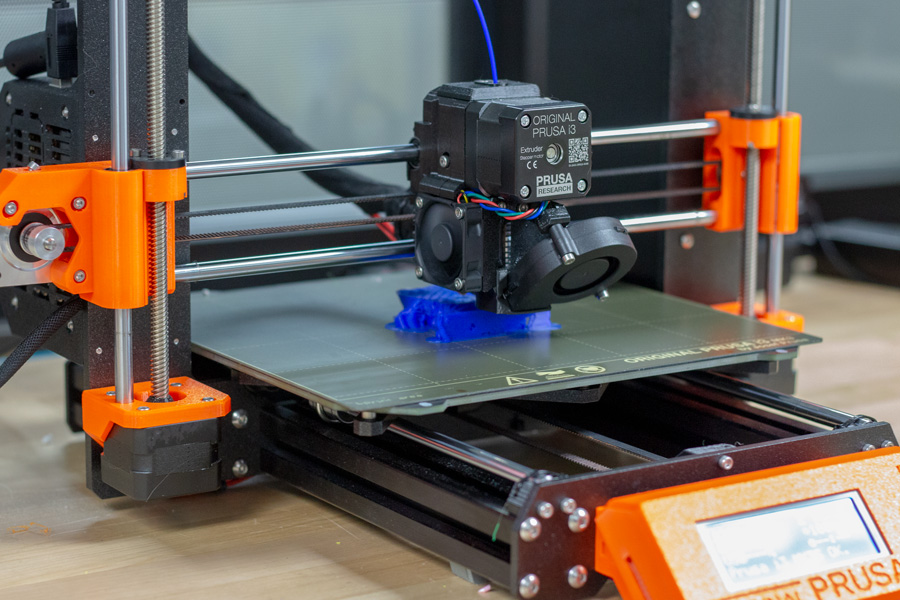 The first model used starch and plaster-based powder materials and a water-based binder to print objects.
The first model used starch and plaster-based powder materials and a water-based binder to print objects.
In the same year, another novel 3D printing solution was brought closer to the market. In 1993, Royden Sanders founded Solidscape (originally called Sanders Prototype Inc.), which created wax 3D printers. These didn’t create the conventional prototypes that other technologies sought to, but instead made wax molds. These molds were then used in investment casting to create objects out of other, more solid, materials. Solidscape released the Model Maker in 1994, their first wax 3D printer, establishing itself as a favorite among jewelers creating 3D printed jewelry.
In less than ten years, 3D printing had gone from being a fanciful idea on a piece of paper to an effective niche option in small-scale manufacturing. The machines might have been big and slow, but that was the norm in 1995. Even desktop computers were expensive then. Much more was to occur however, as we will find out.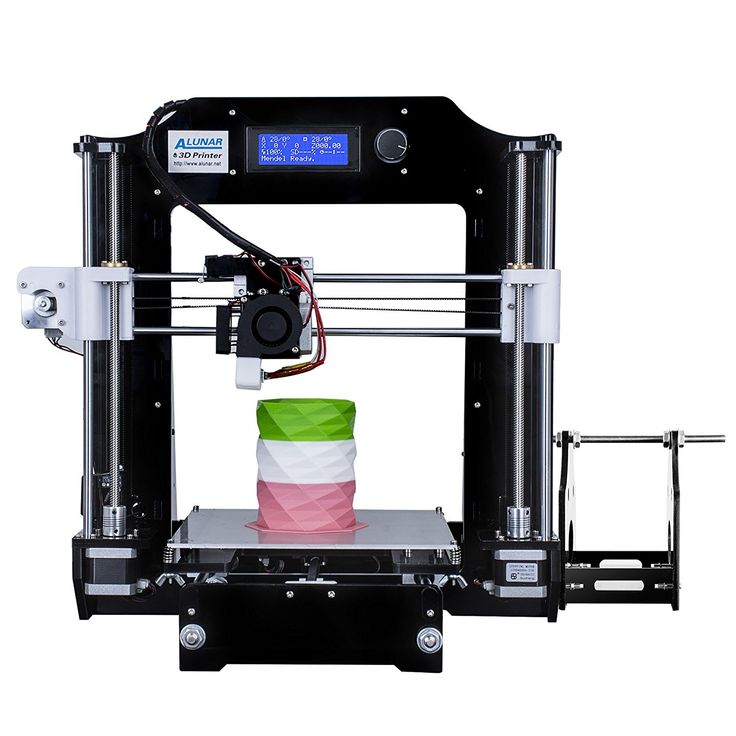
The beginning of house 3D printing
Dr Behrokh Khoshnevis, an academic based in California, first envisioned 3D printing larger layers on huge, industrial-scale printers in the mid-1990s. His focus was on creating enormous parts for airplane propellors or sand molds.
However, in the face of a number of natural disasters, he realized the potential of the technology to create shelters in record time, and for far lower costs.
“In 1994 I started thinking about large-scale fabrication with 3D printing. I wasn’t happy with the speed of fabrication of the early 3D printers, and still they haven’t changed much as far as speed is concerned. I knew there was no other way to increase the speed of 3D printing than increase the layer height, but if you increase layer height then surface quality will suffer.
“So then I came up with the idea that I call Contour Crafting, in 1994. My first patent on it was issued in 1996, a couple years after.
”
- You can read our full interview with Dr Khoshnevis here.
This was just the start of what is now one of 3D printing’s most promising applications.
History of 3D Printing Part 2: 1996 – 2009, the journey to democratization
The first ten years of the history of 3D printing led to the birth of future giants such as 3D Systems, Stratasys, and EOS. Still, in the mid-1990s, they were relative minnows compared to the billion-dollar valuations they now possess.
1996 – 98: Arcam, Objet, and the first 3D printing medical breakthrough
The late 1990s was another important time for newly established 3D printing companies. 1997 saw the creation of Arcam, who specialize in metal 3D printer machines and who are the only manufacturer of Electron Beam Melting (EBM) 3D printers. Additionally, the following year saw Objet Geometries established in 1998 in Israel, who would introduce their PolyJet 3D printing technology to the world.Arcam, a major metal 3D printer manufacturer who make Electron Beam Melting 3D printers, were established in 1997.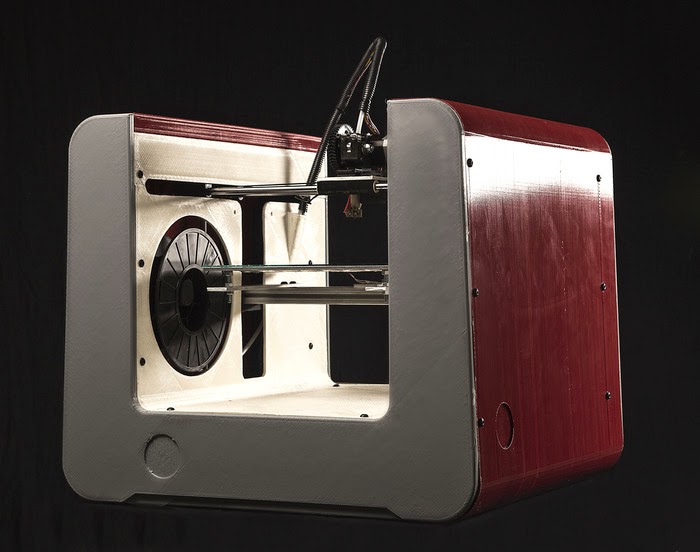 This is one of their current EBM 3D printers.
This is one of their current EBM 3D printers.
Stepping away from the purely commercial side of 3D printing, 1999 saw the first extraordinary achievement by 3D printing in the medical industry. Scientists at the Wake Forest Institute for Regenerative Medicine managed to 3D bioprint synthetic scaffolds of a human bladder. They then coated these scaffolds with cells from the patient’s tissue before this newly generated tissue was implanted into the patient. Since this tissue was made from the patient’s own cells, there was a low-to-zero risk of the body rejecting it, marking an important win for 3D printing in medical.
- For more information on 3D printed organs, check out our feature story on 3D bioprinting
- We also have a feature story on 3D printing in medicine
1999 – 2002: 3D printing goes multi-colored, 3D Systems take over SLS
The turn of the millennium brought another set of milestones for 3D printing. ZCorp revealed the first multi color 3D printer, whilst Objet Geometries released their first inkjet 3D printer, both in 2000. Though Stratasys and 3D Systems were still two of the biggest names in the industry, churning out a variety of industrial machines, these hard-working understudies were growing in size and stature.
Though Stratasys and 3D Systems were still two of the biggest names in the industry, churning out a variety of industrial machines, these hard-working understudies were growing in size and stature.
In a huge move at the time, 3D Systems took control of the Selective Laser Sintering market by acquiring DTM in April 2001. The move was worth $45M and saw 3D Systems become market leaders in two different 3D printing technologies: SLA and SLS.3D Systems’ buyout of DTM meant they controlled both the SLS and SLA market. This is one of DTM’s early SLS 3D printers under the 3D Systems umbrella.
2002: 3D printed bladders, and EnvisionTEC
The 3D printed bladder was merely the start for bioprinting and 3D printing’s ongoing usefulness in medical treatments. In 2002, a 3D printed miniature human kidney was created, again at the Wake Forest Institute for Regenerative Medicine. Though not full size, this represented a key advancement in bioprinting, exciting many that 3D printed organs could solve the shortage of organs available for transplant, and even 3D print hearts.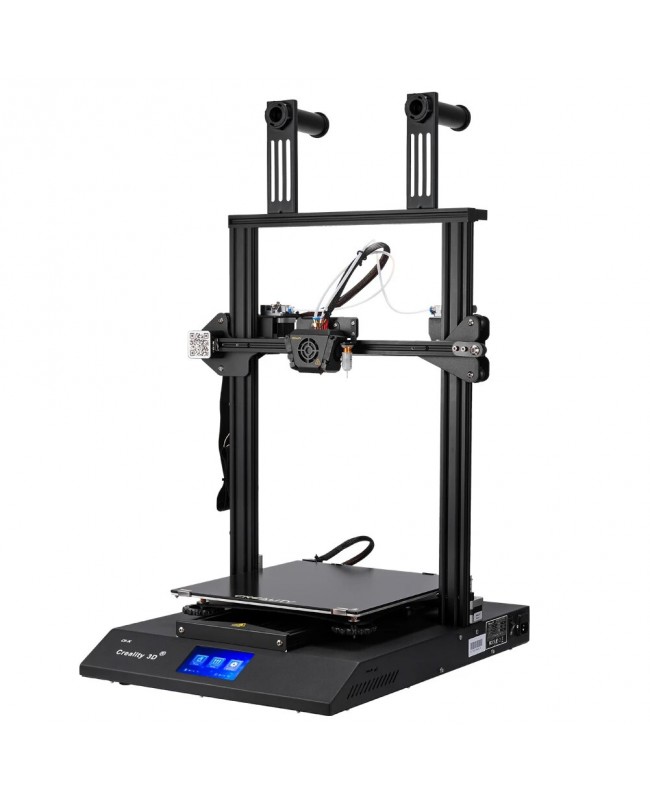
EnvisionTEC were also established in 2002, who have grown to become a major 3D printing company, selling over 40 printers which are widely used across the jewelry, bioprinting and dental industries.
2004 – 05: Beginnings of RepRap, and 3D Printing goes HD
During the years 2004 and 2005, the beginnings of what is arguably the single most important event in 3D printing history occurred. A senior lecturer at the University of Bath, Dr. Adrian Bowyer, had been inspired by 3D printing and had ideas for 3D printers that could self-replicate — building more versions of themselves.
“I’d been interested in self-reproducing machines since I was a child, I don’t really know where that originated — nearly 70 years ago. That was a constant background interest. Though it wasn’t a research activity, I had not done any research into self-replicating machines.
“They [3D printers] were fabulously expensive: the cheapest one when I started the RepRap project cost around £40,000, and in fact that was one of the ones we bought at the university.
When I looked at how it worked, it seemed it would be possible to make such a machine at a considerably reduced price, but my primary aim was to produce a machine that could produce most of its parts. And so, that was the way the project went.” — Dr Bowyer, in an interview with 3DSourced.
The movement, named RepRap (short for ‘replicating rapid prototyper’), started off as an initiative within the University of Bath, but later gained popularity worldwide. The project was open source and focused on the spreading of low-cost 3D printing worldwide, leading to its democratization. Interest in these low cost 3D printers skyrocketed as people edited and tinkered with his designs.
- We’ve also ranked the best RepRap 3D printers.
ZCorp were intent on making 2005 their year too however, announcing their Spectrum Z510 3D printer. This wasn’t your average yearly upgrade with marginally improved specs, but a voyage into the unknown which shattered perceived limitations of 3D printing.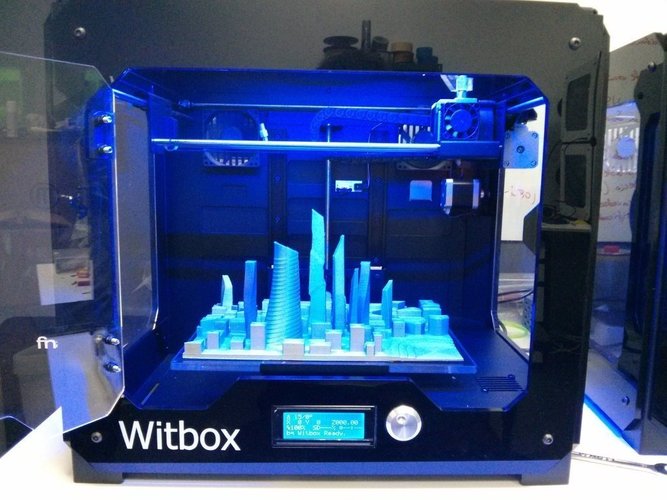 The Z510 could not only print in color, but was the first 3D printer that could print in color in HD.
The Z510 could not only print in color, but was the first 3D printer that could print in color in HD.
2005 – 08: Binder Jetting, RepRap becomes viable
Also in 2005, ExOne was established as a standalone company from the Extrude Hone Corporation. ExOne would go on to become a leader in Binder Jetting 3D printing, capable of 3D printing objects in metal as well as sandstone. Binder Jetting can create full-color sandstone objects, as well as metal parts with very complex geometries.
Whilst corporations were breaking records, Dr. Adrian Bowyer and his RepRap movement were also hard at work with more wholesome goals. The 2008 release of the ‘Darwin’ RepRap 3D printer was huge – the printer could self-replicate, and people could now easily and cheaply 3D print at home if they had moderate technological and technical knowledge.
Dr Bowyer talking about Vik Olliver using the first RepRap to ever print a part of itself:
“It wasn’t very reliable then! And I didn’t know beforehand because that was actually done by Vik Olliver on the other side of the world! In fact, I didn’t know he was going to try and do that before he did, he did and then put up a blog post and that’s how I learned about it.
I thought wa-heyyyy! It worked!”
Darwin wasn’t pretty, but it was functional. What used to be an industry dominated by room-sized industrial machines could now be rivaled by machines that fit on top of a washing machine.
Anyone could easily obtain the parts to create their own Darwin, the only rule being that if you received the parts, you were under obligation to 3D print the parts for more Darwins for other enthusiasts. DIY 3D printer kits would go on to have an incredible impact.
Images of the first self-replicated Darwin RepRap 3D printers. Dr Adrian Bowyer is on the left.2008: Thingiverse, and the begininng of 3D printed prosthetics
Although now widely known, a small website called Thingiverse, owned by a fledgling company called Makerbot launched in 2008. Thingiverse allowed designers to upload their 3D printer models built on various 3D software for others to download for free and print at home. Since everybody loves free stuff, Thingiverse soon took off.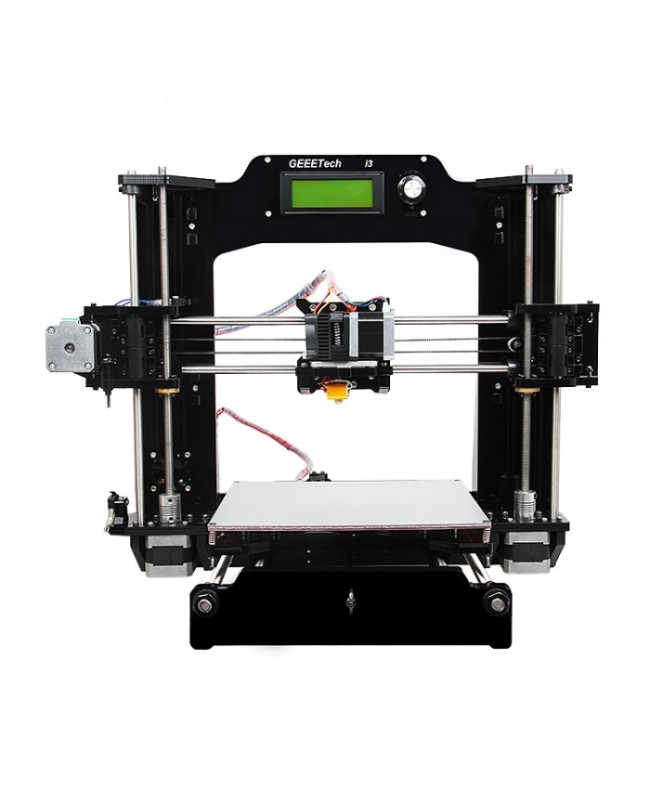 It is now in the top 700 most popular websites in the USA, and just outside the top 1,000 websites in the world. Thingiverse now hosts over a million STL files that anyone can download and tinker with.
It is now in the top 700 most popular websites in the USA, and just outside the top 1,000 websites in the world. Thingiverse now hosts over a million STL files that anyone can download and tinker with.
- We also have a list of 15 of the best sites to download 3D printer files.
Another major event in 2008 was the first 3D printed prosthetic. This extraordinary achievement was compounded by the fact that this prosthetic leg did not need to be assembled, it was 3D printed to function immediately. This opened many people’s eyes to how 3D printing could save time and labor, as fully-assembled objects could be printed from scratch.
The one-off nature of 3D printing also suggested that it would be the perfect method to create customized prosthetics and medical implants based on individual patients’ needs. Instead of the usual several-month lead times for prosthetics, 3D scanners could scan a patients’ arm or leg, and almost immediately begin to create a prosthetic that fit them perfectly.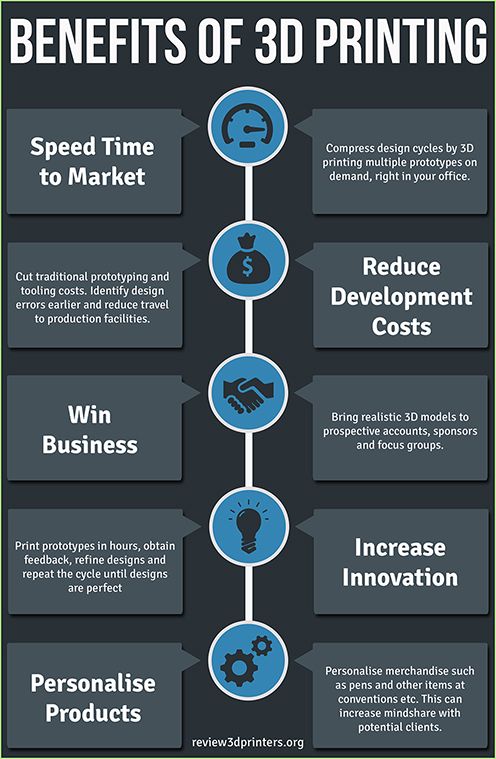
Now in the present day, thousands of volunteers work to create 3D printed prosthetic hands and arms for children born without them. The project, called E-Nable, encourages people to print their own prosthetic hands to give away, and to develop and improve existing prosthetic models.
- We also have a full feature story on how millions of lives can be improved by 3D printed prosthetics.
Finally in 2008, Stratasys released a new material compatible with their FDM 3D printers. This wasn’t any material however, but a material that was bio-compatible. This opened the door for 3D bioprinting to become far more widely available in the near future.
The years up to the start of 2009 were an adolescence for 3D printing. New technologies became available such as Electron Beam Melting and Binder Jetting, medical advances were made, and the RepRap movement became viable.
In 2009 however, US patent law meant that within a few years 3D printers would become cheap enough for everybody to have one in their home if they wished.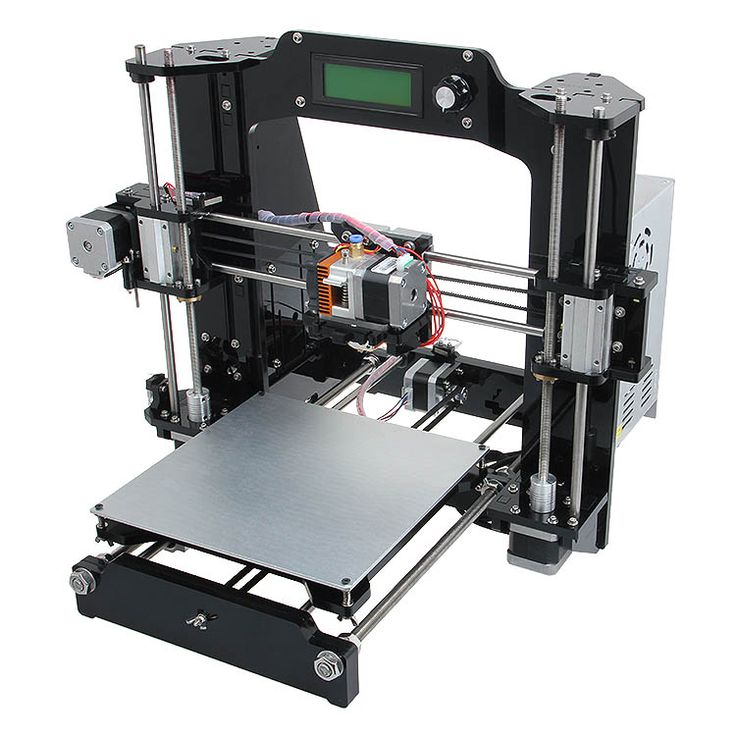
House printing moves forward, and into space
Dr Khoshnevis refined and improved his house 3D printing technology — called Contour Crafting.
“We [managed to first accurately extrude concrete] around 2003. And in 2004 my work became very famous, in the New York Times… and that’s when the world learned about [Contour Crafting], and it inspired a lot of others to go after it.”
However, facing economic disaster after the crash of 2008, the housing market bombed, along with Dr Khoshnevis’ investment from the industry.
“So I had to also chase the money. In 2008, 2009, real estate went down… and with it went construction, and the support I was getting from industry disappeared. So that’s when I started thinking about space.”
Without funding or support, yet fully confident Contour Crafting could change the world, Dr Khoshnevis embarked on his multi-planetary construction 3D printing vision.
The idea was deceptively simple: if we could print concrete on a 3D printer on Earth, an adapted version could be made that could print with locally-sourced lunar regolith to create Moon (or Mars) bases for permanent settlements in the near future.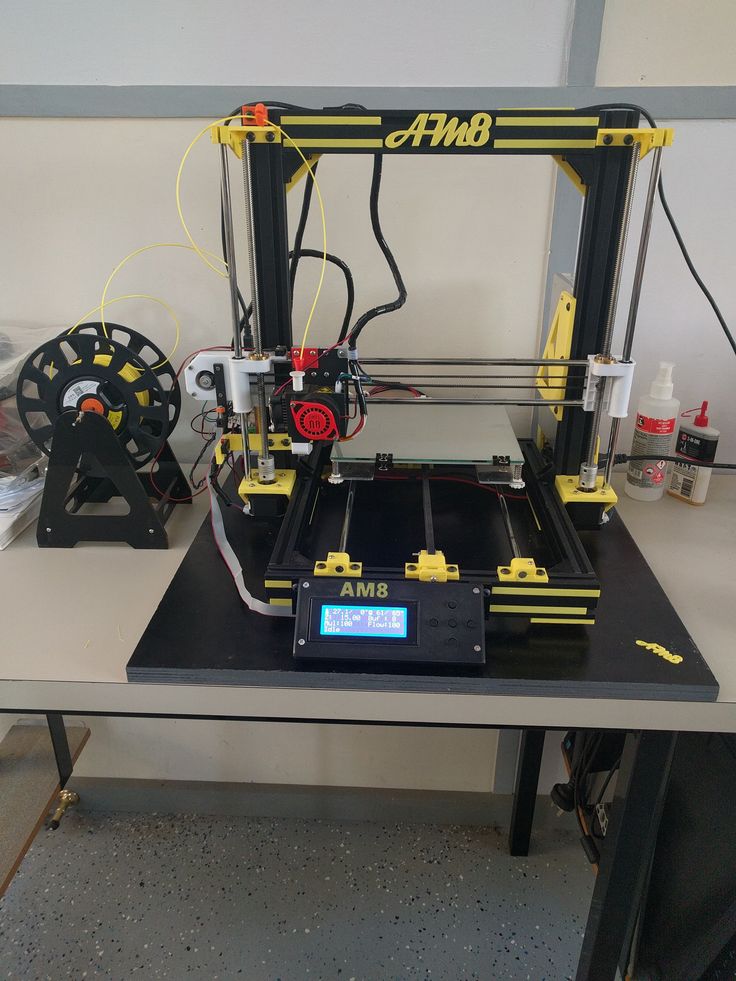
History of 3D Printing Part 3: 2009 – 2014: FDM & SLA patents expire, worldwide democratization of 3D printing
A patent expired between end tail end of 2008 and the beginning of 2009. Big deal, patents expire all the time right? This patent was owned by a now-very-large company called Stratasys, for Fused Deposition Modeling technology.
FDM is the simplest 3D printing technology; it involves heating up a plastic filament until it melts, and then extrudes it out layer-by-layer. Since the technology could be replicated the most cheaply, business-minded hobbyists and small businesses watched on eagerly for the patent to fall into public domain so they could create their own versions.
The two biggest events in the history of 3D printing, for every day fans, was firstly the development of the RepRap 3D printer. This showed that low cost 3D printers could be done, and that most of the 3D printer parts could be 3D printed by another printer.
The second event was the expiration of the FDM patent.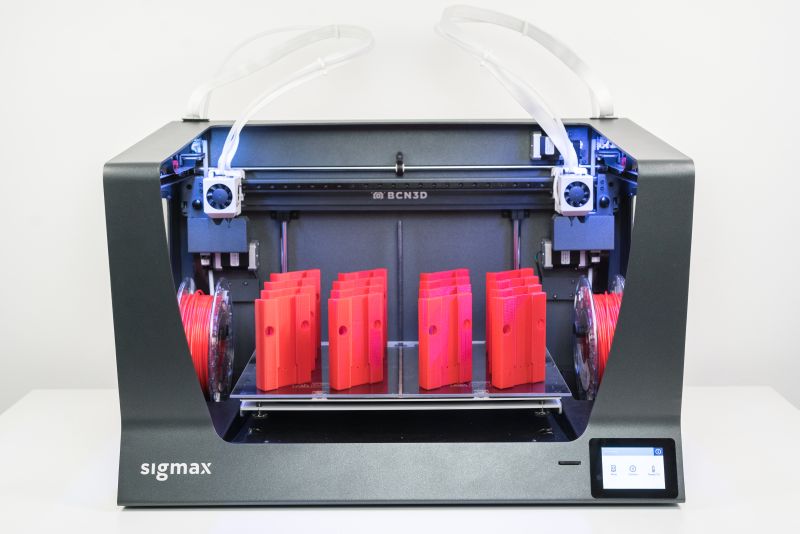 This meant that anyone could not build these cheap 3D printers with no legal issues, and set the tone for incredible advances in the industry.
This meant that anyone could not build these cheap 3D printers with no legal issues, and set the tone for incredible advances in the industry.
2009: The first affordable FDM 3D printers
The first affordable FDM 3D printer kit was released in January 2009. It was called the BfB RapMan printer and although it was first, it wasn’t ugly or terrible. Future iterations were made, and perhaps it would have made a bigger impact if the fledgling company we mentioned earlier hadn’t appeared three months later.The BfB RapMan, the first affordable FDM 3D printer kit.
The first Makerbot DIY 3D printer kit released in April 2009. Makerbot were supporters of the open source community, and their first printer, called Cupcake CNC, could be built entirely from parts downloadable from Thingiverse. Demand exploded, and Makerbot had to ask their customers for help to create parts for their backlog of orders. Makerbot were becoming the early kings of affordable desktop 3D printers.
Makerbot’s first model, the Cupcake CNC.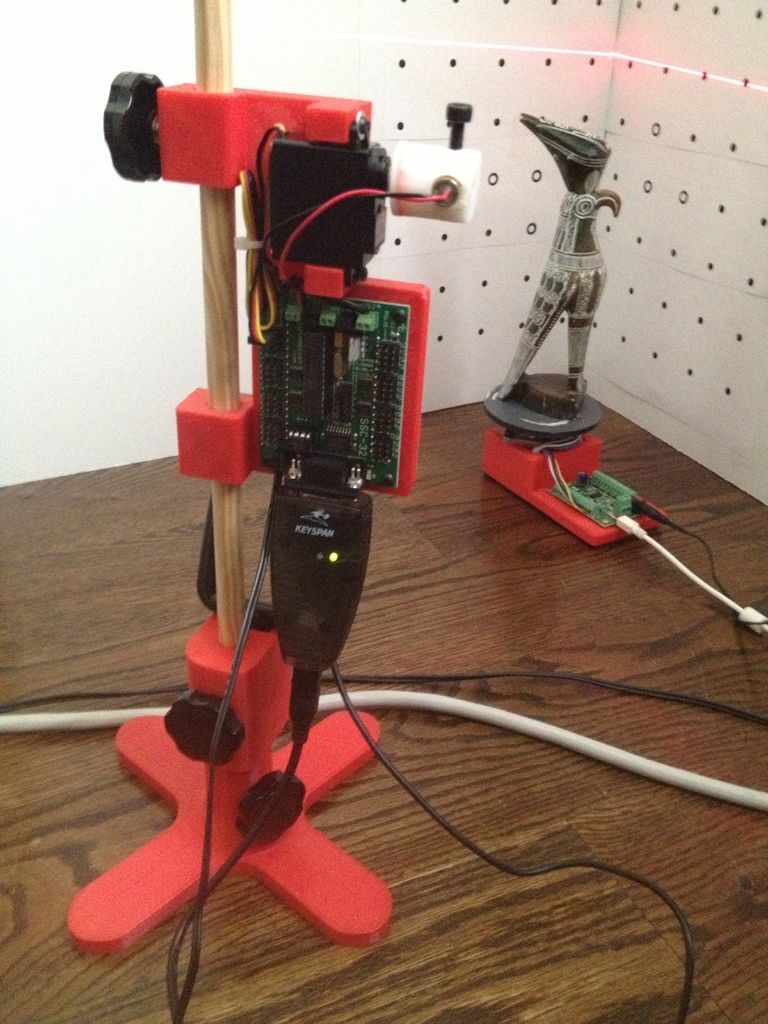
2009 wasn’t just a year for FDM printers however. Organovo, a 3D bioprinting firm, managed to create the first 3D printed blood vessel. This was managed on a new 3D bioprinter which showed significant promise for the future creation of whole organs such as kidneys and hearts.
- We also have a feature story on how close we are to functioning 3D printed hearts.
2009 – 11: Cars, gold jewelry, and the rise of Ultimaker
In recent years, online 3D printing service companies had sprung up to capitalize on the growing demand for 3D printed parts. These services work by allowing users to upload models they have either designed or downloaded, and pay for them to be 3D printed and mailed to their door. Some even allow users to sell their designs on an online marketplace and get paid for their designs.
Companies like Shapeways, Sculpteo, i.materialise, and later 3D Hubs, grew to print hundreds of thousands of parts on demand by the early 2010s. i.materialise then made headlines in 2011 when they were the first to offer 14k gold and sterling silver as 3D printable materials. Anyone who had designed something on their computers at home could (if they had deep enough pockets) have their model 3D printed in gold. The possibilities for custom and high fashion 3D printed jewelry expanded.
Anyone who had designed something on their computers at home could (if they had deep enough pockets) have their model 3D printed in gold. The possibilities for custom and high fashion 3D printed jewelry expanded.
Also in 2011, Kor Ecologic produced the first 3D printed car. The car, called Urbee, uses electric motors and gets 200 miles to the gallon.
- Check out our ranking of the most exciting 3D printed car projects.
Though Makerbot had dominated the open source, desktop 3D printer market, competition was about to toughen up. Ultimaker was established in 2011 in Geldermalsen, Netherlands, and released the first Ultimaker 3D printer in March 2011. The Ultimaker Original was made from laser-cut plywood and proved an enormous success, launching them into the spotlight.The first Ultimaker 3D printer was a hit with 3D printing enthusiasts.
2012 – 14: The democratization of Stereolithography
Though the original patents for Stereolithography had expired over five years before, nobody had yet been able to create an affordable SLA 3D printer. This changed in June 2012 when the B9Creator released after raising over $500,000 on Kickstarter. The B9Creator utilized a similar technology to Stereolithography called Digital Light Processing (DLP), and could be pre-ordered for $2,375.
This changed in June 2012 when the B9Creator released after raising over $500,000 on Kickstarter. The B9Creator utilized a similar technology to Stereolithography called Digital Light Processing (DLP), and could be pre-ordered for $2,375.
6 months later, the affordable resin 3D printer game was changed again, when a new and then unknown startup called Formlabs launched their Kickstarter campaign for a 3D printer called the Form 1. You could pre-order a Form 1 starting at $2,299, and unlike the B9Creator it utilized Stereolithography. The project was an instant hit, raising an almost unprecedented $2.95 million in 30 days. Formlabs have since gone on to release SLS 3D printers, an upgraded SLA 3D printer in the Form 3, and grow to a billoin-dollar valuation.
2012 – 13: Stratasys & Objet merge, Stratasys buys Makerbot
Objet Geometries had gone from strength to strength since the early 2000s, improving their PolyJet technology that could print in full-color. This eventually led to possibly the biggest acquisition in the history of the 3D printing industry.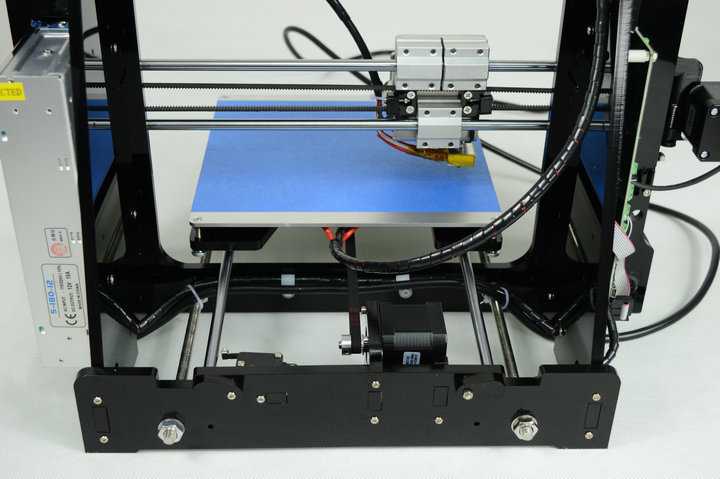 On April 16th 2012, Stratasys announced that it had merged with Objet in an all-stock transaction, with Stratasys being the surviving company. Stratasys would own 55% of this new company, with Objet owning 45%. This gargantuan deal meant the new Stratasys was worth $3 billion at the time.
On April 16th 2012, Stratasys announced that it had merged with Objet in an all-stock transaction, with Stratasys being the surviving company. Stratasys would own 55% of this new company, with Objet owning 45%. This gargantuan deal meant the new Stratasys was worth $3 billion at the time.
Stratasys didn’t stop there however. Despite competition from Ultimaker, and open source fans Aleph Objects (who produce Lulzbot 3D printers), Makerbot were still doing very well. On June 23rd 2013, Stratasys announced that Makerbot was the newest item on its shopping list, acquiring the FDM 3D printer giant in a $604M deal, with $403M paid upfront in stock. The founders of Makerbot have all since departed, and their newest machines are no longer open source.
Cody Wilson and the 3D printed gun
Later in 2013, Cody Wilson became a viral sensation after his company Defense Distributed posted an STL file on its site for 3D printing a working 3D printed gun. The US Government ordered Defense Distributed to remove the designs three days later, but the gun had already been downloaded over 100,000 times.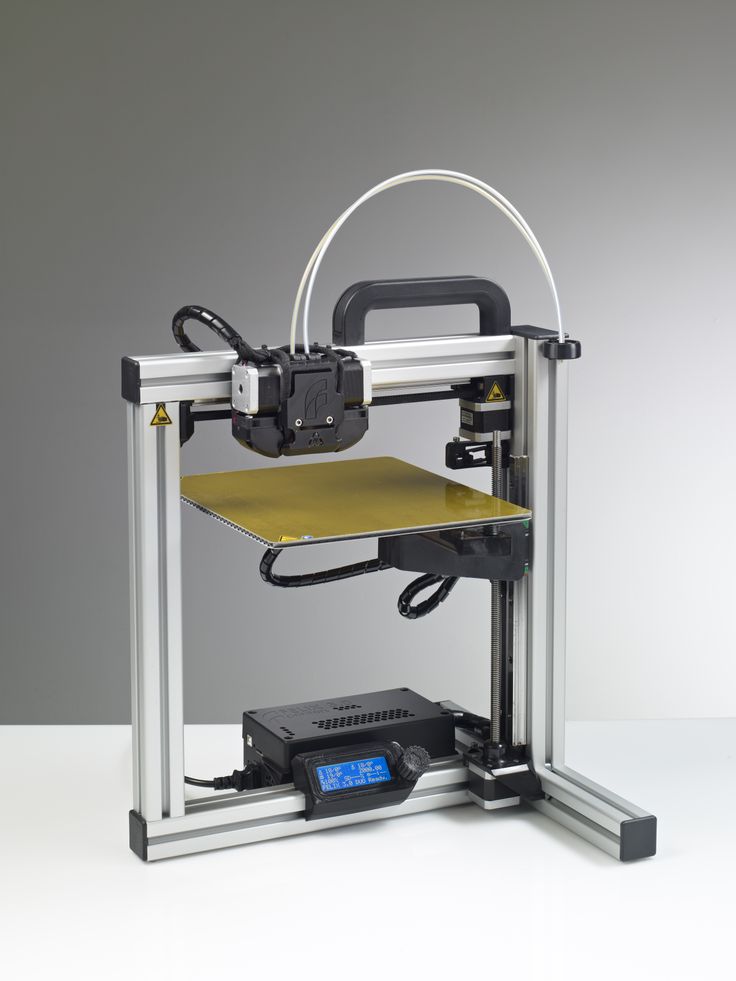
Metal 3D printing has recently become big talk, but before 2015 when tens of startups appeared, the industry was dominated by a few large players like EOS, Arcam and SLM Solutions. 3D Systems’ intent in getting involved in the metal 3D printing sector led to them acquiring French company Phenix Systems in July 2013. 3D Systems paid $15.1M for 81% of the shares and integrated Phenix’s metal 3D printers into their product range.
2014: 3D Printing in space, and SLS and SLA patents expire
A few years after turning his attention to space, Dr Khoshnevis won NASA grand prizes, winning key prize money to further the research.
“We demonstrated at least two technologies that are viable. Technologies for building vertical structures such as hangars, shade walls, radiation protection walls, blast protection walls, and horizontal structures most particularly the landing pads, roads, we demonstrated the feasibility of those entirely to be made with in situ material.
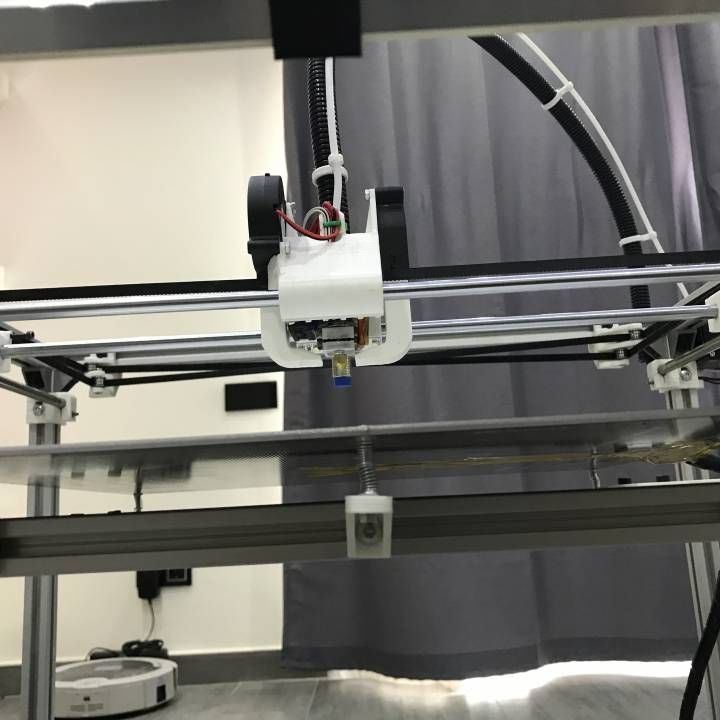
“We actually built… and demonstrated it, that’s why we got Grand Prizes from NASA. My hope and expectation is that those technologies will eventually be used for planetary missions.”
The following year, a more wholesome achievement in 3D printing was realized. NASA announced they had used a 3D printer in space and created the first 3D printed object in space in 2014. This opened the door for future space manufacturing and the ability of future astronauts to create tools on-demand in space. If the team in space needed a particular item, they could be ‘beamed’ the design from Earth at light speed, and 3D print the tool out in space.
2014 was another big year for patents related to 3D printing expiring. First, the major SLS patent expired in 2014, meaning that cheaper alternatives could start being designed by individuals so inclined. Companies like Sintratec and Formlabs worked to create less expensive SLS 3D printers that were still viable.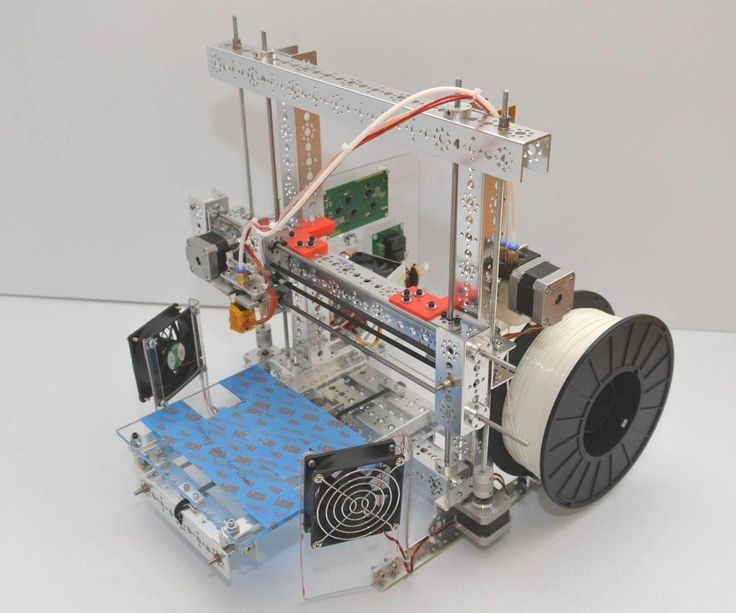 Up until then, most SLS machines were industrial, room-sized behemoths which started at $250,000. This new wave of SLS printers started at $5,000, helping to democratize Selective Laser Sintering.The patent for SLS which expired in 2014.
Up until then, most SLS machines were industrial, room-sized behemoths which started at $250,000. This new wave of SLS printers started at $5,000, helping to democratize Selective Laser Sintering.The patent for SLS which expired in 2014.
Moreover, on March 11th 2014 another major 3D printing patent expired. Though Chuck Hull’s original patent had expired a decade earlier, this new patent expiry meant a much more innovative SLA 3D printing process was now in the public domain. Companies such as Formlabs had launched SLA 3D printers a couple of years previously, which patent-holder 3D Systems did not take a shining to. In fact, 3D Systems sued Formlabs in 2012 after they raised their $2.9M from Kickstarter. The case was eventually settled, with Formlabs agreeing to pay an 8% royalty on all sales to 3D Systems.
Similarly, the original SLA patents expired in 2014.Though 3D printing had always previously been an industry dominated by a few large firms, this period was especially significant.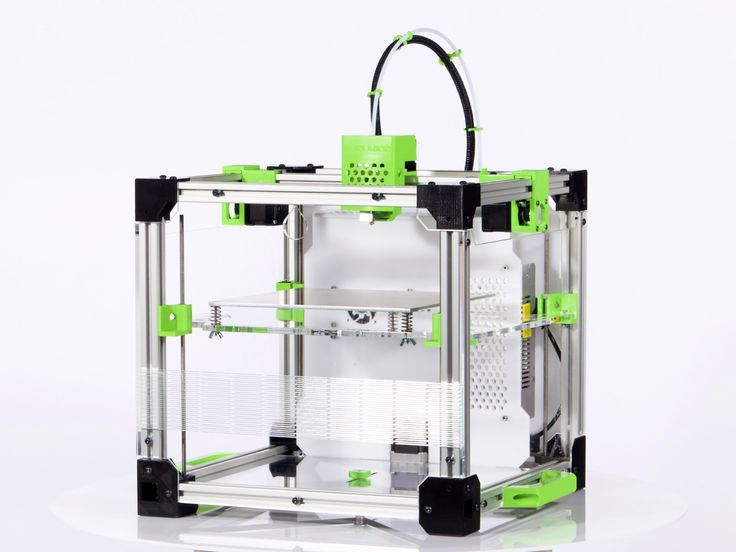 The two original companies, 3D Systems and Stratasys, solidified their hold on the market by acquiring competitors like Phenix, Makerbot, DTM, Objet, and more.
The two original companies, 3D Systems and Stratasys, solidified their hold on the market by acquiring competitors like Phenix, Makerbot, DTM, Objet, and more.
The industry was far from a monopoly, however. Huge numbers of new competitors offered affordable machines that rivaled industrial 3D printers. Examples include Ultimaker, Lulzbot, and Prusa 3D printers in the desktop and DIY 3D printer kit markets, and Desktop Metal, Markforged, and Carbon 3D in the industrial sector. We will speak more on these newly-mentioned companies in the next part.
History of 3D Printing Part 4: 2015 – Present – Metal 3D printing, cusp of major developments in 3D bioprinting and construction
Carbon 3D and Desktop Metal: 0 to $1 billion in 3 years
Carbon 3D was formed on July 11th 2014 in California by Joseph and Philip DeSimone. The main tech behind the company was inspired by Terminator 2, and was named CLIP (Continuous Liquid Interface Production). By the end of 2017 the company had raised over $360 million and had a valuation of $1.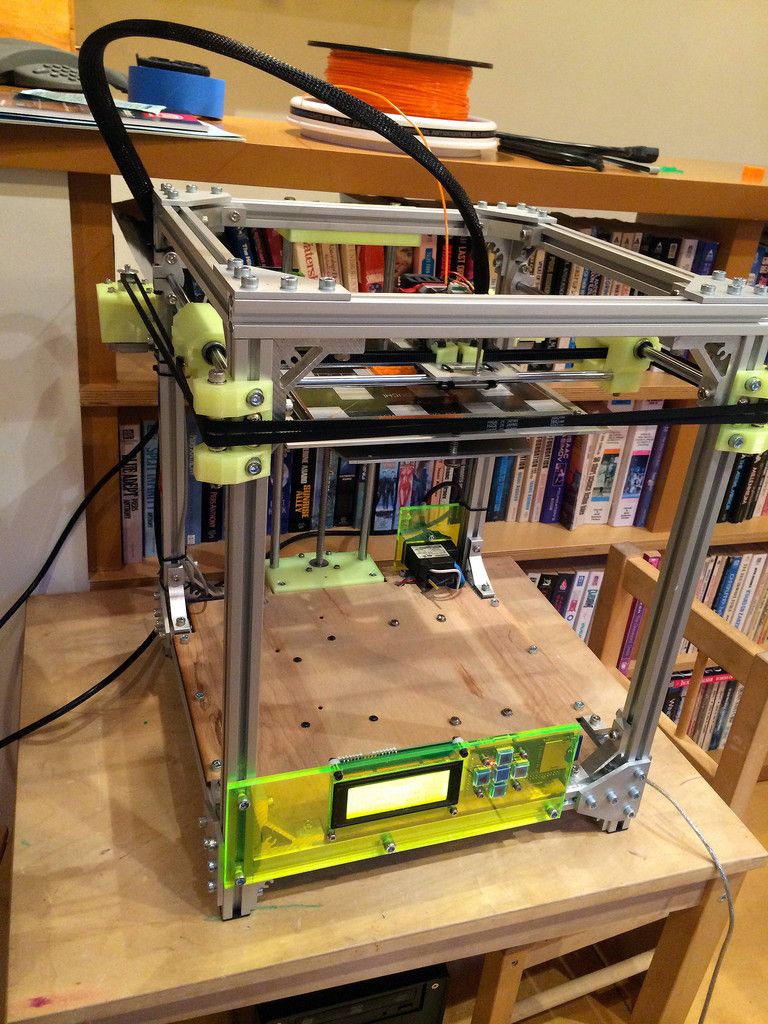 7 billion – more than Stratasys and 3D Systems (both companies fell sharply in value after the 2013-14 3D printing hysteria died down from valuations in excess of $3 billion previously).
7 billion – more than Stratasys and 3D Systems (both companies fell sharply in value after the 2013-14 3D printing hysteria died down from valuations in excess of $3 billion previously).
But how did they manage this?
In March 2015, Joseph DeSimone gave the now-viral TED Talk about 3D printing 100x faster. This announced very clearly to the world that Carbon 3D were ones to watch if they could make their CLIP technology feasible. A major grievance of 3D printing was that it was too slow to ever be relied upon as a medium-volume manufacturing option. If Carbon 3D could really print so much faster, it would rival injection molding and other processes for large-volume plastic parts.
They were not the only new 3D printing startup to reach astronomical valuations and receive hundreds of millions of dollars in investment however. Another example is Desktop Metal, who at the same time released their Studio and Production System metal 3D printers.
Since being founded in October 2015, Desktop Metal have received over $200M in investment and the company is now valued at over $1bn.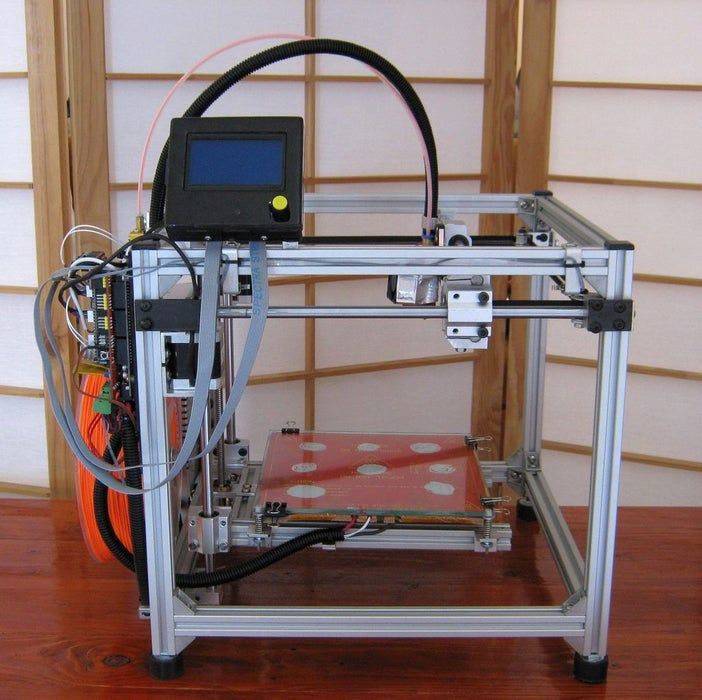 Interestingly, Desktop Metal’s technology, Bound Metal Deposition, is very similar to FDM, just that it works with metal instead. There’s a reason that Silicon Valley investors (as well as Ford, Google, BMW, GE, and more) clamored to invest – their metal 3D printers can print metal 10x cheaper than alternative printers!
Interestingly, Desktop Metal’s technology, Bound Metal Deposition, is very similar to FDM, just that it works with metal instead. There’s a reason that Silicon Valley investors (as well as Ford, Google, BMW, GE, and more) clamored to invest – their metal 3D printers can print metal 10x cheaper than alternative printers!
Desktop Metal’s Production System metal 3D printer, their more expensive and premium printer, uses a new type of binder jetting technology called Single Pass Jetting. This technology allows for the building of metal parts in minutes, rather than hours as with Direct Metal Laser Sintering. It truly is revolutionary, promising to change metal manufacturing in the near future.
- For more info on recent 3D printing success stories, check out our 15 most valuable 3D printer companies ranking.
Though they may both be innovative, companies like Carbon 3D and Desktop Metal are valued very high compared to their current sales and profits.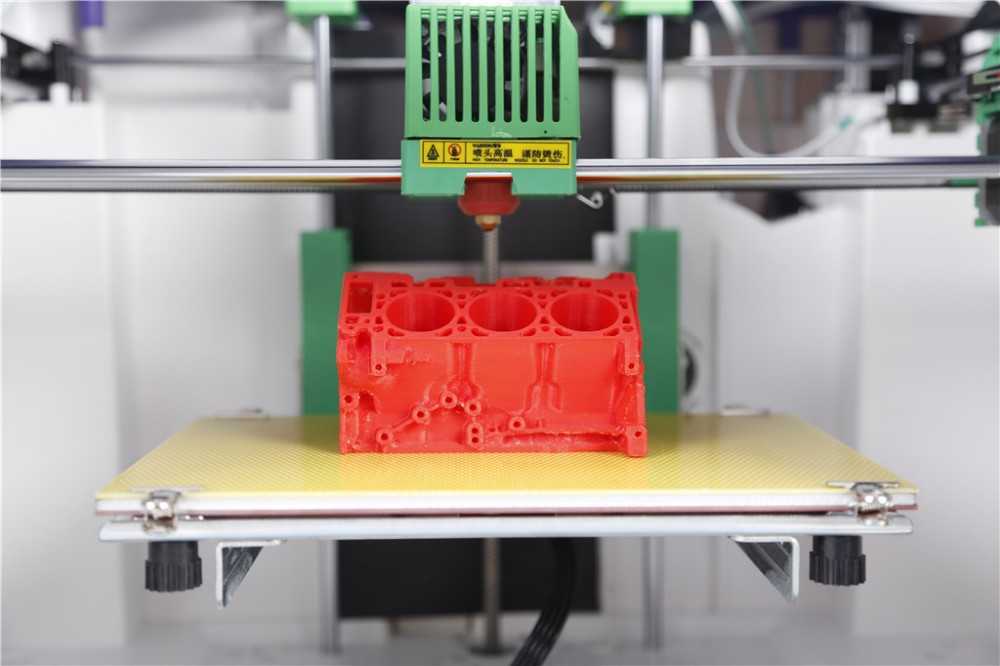 This is because investors are confident that they will grow to be far bigger and more profitable in the future. This trend occurs in most markets, not just 3D printing.
This is because investors are confident that they will grow to be far bigger and more profitable in the future. This trend occurs in most markets, not just 3D printing.
Take Tesla for example – their revenues are dwarfed by some of the larger carmakers, yet Tesla’s market cap is larger than Ford. This is based on belief that Tesla will become the largest carmaker in the world in the future. We will have to see whether companies such as Carbon and Desktop Metal, as well as others like Markforged, Formlabs and Xact Metal can fulfill their investors’ hopes in the same way.
3D Systems enter the Hall of Fame
30 years after 3D Systems had kickstarted the industry, their first ever 3D printer, the SLA-1, was declared a Historic Mechanical Engineering Landmark by the American Society of Mechanical Engineers. This formal recognition of the machine that started it all showed how far 3D printing had come since the 80s.
The SLA-1 was hailed a historic mechanical engineering landmark in 2016.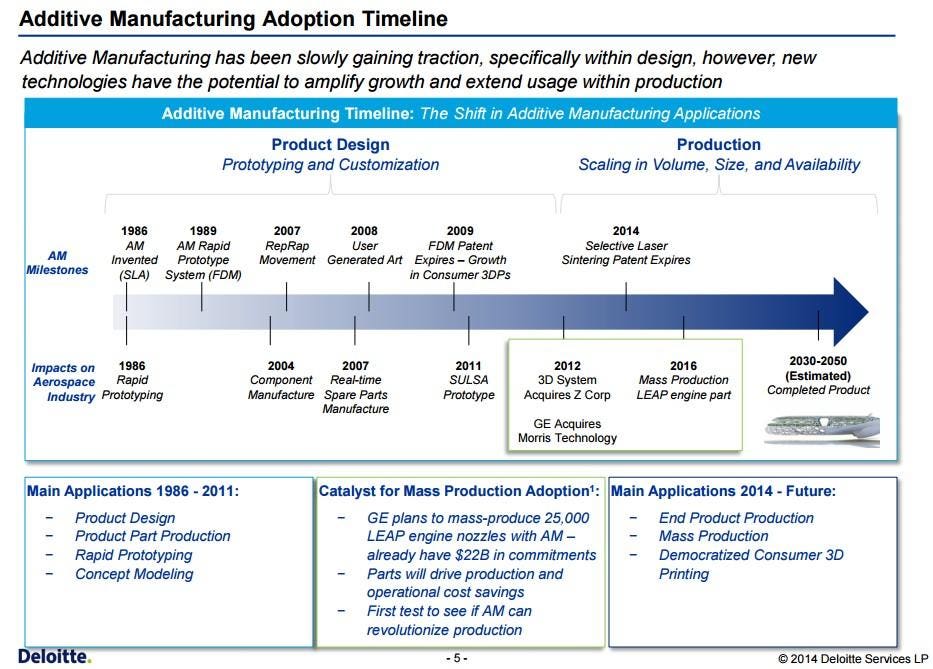
At around the same time, two very big technology companies entered the market. Household name big.
GE and HP enter
The first was HP, leaders in inkjet 2D printing, who in 2016 announced that they would sell printers featuring their patented Multi Jet Fusion (MJF) technology. HP have since gone on to refine this technology, and in 2018 announced full-color 3D printers, industrial 3D printers at a much lower price range of $50,000, and a move into the metal 3D printing market.
The second household name was GE. Following the incorporation of a new company called GE Additive, the multinational giant acquired metal 3D printing companies Arcam and Concept Laser in late 2016 as part of a $1.4bn move into the additive manufacturing industry. GE Additive also tried to acquire SLM Solutions, but were ultimately unable to.
The incumbents now had HP and GE to worry about too. These deep-pocketed giants could invest billions in gaining a crucial technological advantage, and were now forced to innovate harder than ever. Competition is usually only a good thing for consumers however, as each company worked harder and harder to optimize their technologies to be as effective as possible.
Competition is usually only a good thing for consumers however, as each company worked harder and harder to optimize their technologies to be as effective as possible.
The Ultimaker 3
Regarding the desktop 3D printer market, Ultimaker’s October 2016 release of the Ultimaker 3 was another landmark. It was an instant hit, earning boatloads of Best 3D Printer awards and cementing Ultimaker as a key player in the industry, while remaining committed to the open source philosophy. Ultimaker have since released the S3 and S5, which have received positive reviews.The Ultimaker 3 is one of the best 3D printers on the market.
3D printing in construction: a very exciting prospect
But while all these companies were concentrating on 3D printing for manufacturing, others saw it as the solution to the growing housing crisis. 3D printing in construction was a $70M industry in 2017, but reports project it to be worth $40bn by 2027.
Companies such as Apis Cor and WinSun were started, creating huge concrete 3D printers that could build skeletons of houses far quicker and cheaper than any human.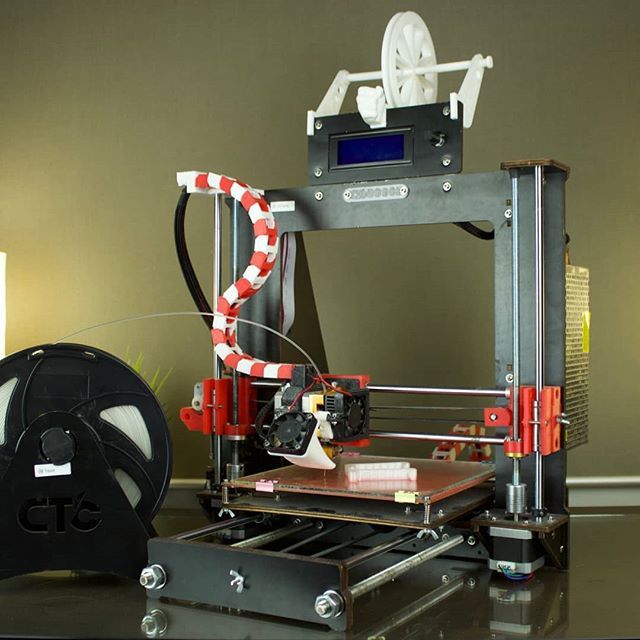 This advance was immortalized by Apis Cor 3D printing a whole house in just 24 hours. Other construction and architectural projects involving 3D printing were completed throughout the 2016-2018 period include 3D printed bridges, houses, and even plans for skyscrapers in Dubai.
This advance was immortalized by Apis Cor 3D printing a whole house in just 24 hours. Other construction and architectural projects involving 3D printing were completed throughout the 2016-2018 period include 3D printed bridges, houses, and even plans for skyscrapers in Dubai.
Ultimaker S5 vs Makerbot Method: The Prosumer 3D Printer Battle 2018/19
Both Ultimaker and Makerbot grew extraordinarily throughout the mid-2010s, and were flying high off their Ultimaker 3 and Makerbot Replicator ranges respectively. By mid-2018 this battle was to move into the prosumer 3D printer range with the release of the Ultimaker S5 in May 2018, and the Makerbot Method in December. Both represented a step up in price, from around $3,000 up to over $5,000.
This was a change from both companies’ roots. They started building small FDM printers — remember the original kits made of wood? — and were previously more aligned with the RepRap philosophy. This move upmarket is an interesting one, though it is worth noting that Makerbot offer a Replicator+ model catered especially to 3D printing in education, retailing at around $2,000.
The Low Cost LCD 3D Printing Revolution
Resin 3D printers used to cost thousands, and that would only afford you a basic SLA printer. Then Digital Light Processing came along a number of years ago, offering a more scalable and modern alternative.
Then it was the turn of LCD 3D printing — more similar in process to DLP than SLA — to usher in the new era of low cost resin printing. Suddenly low cost resin printers like the ELEGOO Mars and AnyCubic Photon offered reasonably accurate resin prints at a printer cost of less than $500. When the first Formlabs printers came out, people found it astonishing that you could print accurate resin objects for $3,500 — oh how things have changed.
- We have a ranking of 5 of the best cheap LCD 3D printers.

World’s Biggest 3D Printed Building: Apis Cor One-Ups Itself
Apis Cor already made headlines when they built a house in 24 hours. Then in October 2019 they went further, building a huge 3D printed building in Dubai. Dubai has been known for its openness to innovative new technologies, especially 3D printing, with this huge structure earmarked for administrative staffing.
Carl Deckard, inventor of SLS, dies at 58
One of the four original 3D printing company founders, Carl Deckard passed away on December 23rd 2019, at the age of just 59. The genius inventor of Selective Laser Sintering had since founded a number of other companies and held 27 patents, and was the most major figure in the history of 3D printing to pass away.
The founders of SLA and FDM, Chuck Hull and S. Scott Crump respectively, are still part of their companies, that are now both public and boast valuations of just under $1 billion dollars. It is unknown how much equity they hold.
EOS’ founder Dr Hans Langer, is 3D printing’s first and currently only billionaire, with an estimated net worth of $3. 1bn as of August 2020 according to Forbes. The German company never went public, and is still successful 30 years on in the SLS and DMLS 3D printer markets.
1bn as of August 2020 according to Forbes. The German company never went public, and is still successful 30 years on in the SLS and DMLS 3D printer markets.
From the 80s to Today
3D Learning Hub
See all categories
Contents:
- Introduction
- The 1980s: Birth of the main 3D Printing Techniques
- The 1990s: Emergence of the Main 3D Printers Manufacturers & CAD tools
- The 2000s: 3D Printing Gains Media Visibility
- The 2010s: Years of Visibility, Innovation and Hopes for 3D Printing
- What about now, and what about the future?
Introduction
3D printing is not as new as you may think! Actually, FDM (Fused Deposition Modeling) technology became quite popular and impressive for the general public around 2009 because of its media coverage. At some point, a lot of people actually thought that FDM was the only additive manufacturing technology. But FDM is not even the first 3D printing technology developed, and 3D printing actually started in the 1980s.
At some point, a lot of people actually thought that FDM was the only additive manufacturing technology. But FDM is not even the first 3D printing technology developed, and 3D printing actually started in the 1980s.
Here is a quick 3D printing timeline from the 1980s to today. The history of 3D printing is fascinating. The first machines, the great expectations, and the many 3D printing applications that are now flourishing. Let’s take a look back at the 3D printing history.
The 1980s: Birth of the main 3D Printing Techniques
The concept of 3D printing has been imagined back in the 1970’s, but the first experiments are dated from 1981. The first 3D printing attempts are granted to Dr Kodama for his development of a rapid prototyping technique. He was the first to describe a layer by layer approach for manufacturing, creating an ancestor for SLA (or Stereolithography): a photosensitive resin was polymerized by an UV light. Unfortunately, he did not file the patent requirement before the deadline.
A few years later, a French team of engineers, Alain Le Méhauté, Olivier de Witte and Jean-Claude André, was interested by the stereolithography but abandoned due to a lack of business perspective. This 3D printing attempt was also using a stereolithography process.
If you want more information about these first experiences, check out our interview of Jean-Claude André. At the same time, Charles Hull was also interested in the technology and submitted a first patent for stereolithography (SLA) in 1986. He founded the 3D Systems Corporation and in 1988, released the SLA-1, their first commercial product.
If SLA was the first 3D printing technology developed, what about SLS (Selective Laser Sintering) and FDM (Fused Deposition Modeling) back then?
In 1988, at the University of Texas, Carl Deckard brought a patent for the SLS technology, another 3D printing technique in which powder grains are fused together locally by a laser.
In the meantime, Scott Crump, a co-founder of Stratasys Inc. filed a patent for Fused Deposition Modelling (FDM). In less than ten years, the three main technologies of 3D printing were patented and 3D printing was born!
filed a patent for Fused Deposition Modelling (FDM). In less than ten years, the three main technologies of 3D printing were patented and 3D printing was born!
To resume:
1980: First patent by japanese Dr Kodama Rapid prototyping
1984: Stereolithography by French engineers then abandoned
1986: Stereolithography taken up by Charles Hull
1988: First SLA-1 machine
1988: First SLS machine by DTM Inc then buy by 3D system
The SLA 1The 1990s: Emergence of the Main 3D Printers Manufacturers & CAD tools
Now that the basics were established, the evolution of additive manufacturing is pretty fast. The main 3D printers manufacturers are emerging, new technologies are perfected, and 3D modeling tools start to be developed as well, bringing additive manufacturing to the next level.
In Europe, EOS GmbH was founded and created the first EOS “Stereos” system for industrial prototyping and production applications of 3D printing. Its industrial quality is today recognized worldwide in SLS technology (Selective Laser Sintering technology) for plastics and metals.
Its industrial quality is today recognized worldwide in SLS technology (Selective Laser Sintering technology) for plastics and metals.
In 1992, the Fused Deposition Modeling patent was issued to Stratasys, which developed many 3D printers for both professionals and individuals. From 1993 to 1999, the main actors of the 3D printing sector emerged with various techniques:
ZCorp and binder jetting: Based on MIT’s inkjet printing technology, they created the Z402, which produced models using starch- and plaster‐based powder materials and a water‐based liquid binder
Arcam MCP technology and Selective Laser Melting.
At the same time, we can see that more and more new CAD tools, allowing to create 3D models, are becoming available and developed, with, for example, the creation of Sanders Prototype (now known as Solidscape), one of the first actors to develop specific tools for additive manufacturing.
Charles Hull was awarded the European Inventor Award in the Non-European countries category, by the European Patent Office Price in 2014.
To resume:
1990: First EOS Stereos system
1992: FDM patent to Stratasys
1993: Solidscape was founded
1995: Z Corporation obtained an exclusive license from the MIT
1999: Engineered organs bring new advances to medicine
Charles Hull was awarded the European Inventor Award in the Non-European countries category, by the European Patent Office Price in 2014.The 2000s: 3D Printing Gains Media Visibility
In 2000, the millennium saw the first 3D printed kidney, but we would have to wait 13 more years to see it transplanted into a patient. 3D printed kidneys are now working perfectly and researchers are experimenting on accelerated growth to transplant organs very rapidly.
2004 was the year of the initiating of the RepRap Project which consists of a self-replicating 3D printer. Yes, it is possible to 3D print a 3D printer. This open-source project led to the spreading of the FDM 3D desktop 3D printers, and of the popularity of the technology in the makers community.
In 2005, ZCorp launched the Spectrum Z510, the very first high-definition color 3D printer.
In 2008, 3D printing reached an even greater media presence thanks to another medical application: the first 3D printed prosthetic limb.
This amazing medical 3D printing project incorporated all parts of a biological limb, was printed ‘as is’, without the need for any later assembly. Nowadays, combined with 3D scanning, 3D printed medical prosthesis and orthosis are more and more cheaper and faster to get for the patient. Moreover, these prostheses are more and more optimized and adapted to the morphology of the patient. Additive manufacturing is bringing new opportunities regarding mass-customization.
http://www.ufunk.net/en/tech/exo-prosthetic-leg/2009 was the year in which the FDM patents fell into the public domain, opening the way to a wide wave of innovation in FDM 3D printers, a drop of the desktop 3D printers price, and consequently, since the technology was more accessible, an increased visibility.
2009 was also the year Sculpteo’s online 3D printing service was created, one of the pioneers of the now flourishing online 3D printing services, another step toward 3D printing accessibility!
To resume:
2000: a 3D printed working kidney is created
2000: MCP Technologies (an established vacuum casting OEM) introduced the SLM technology
2005: Z Corp. launched Spectrum Z510. It was the first high-definition color 3D Printer on the market.
2006: An open source project is initiated (Reprap)
2008: The first 3D printed prosthetic leg
2009: FDM patents in the public domain
2009: Sculpteo is created
The 2010s: Years of Visibility, Innovation and Hopes for 3D Printing
The recent years have been very important for 3D Printing. With the FDM patent expiration, the first years of the decade have become the years of 3D printing. Additive manufacturing is then becoming a real and affordable prototyping and production technique for businesses, opening new possibilities
In 2013, President Barack Obama mentioned 3D printing as a major issue for the future in his State of the Union speech, which made “3D printing” an absolute buzzword.
It is now very present in the general public’s mind, and in policy makers’ decisions. The technology is forever progressing, just as are the uses of this technology. More and more small and big companies take advantage of the low prototyping price that 3D printing offers, and have fully integrated it in their iteration, innovation and production processes.
In 2010, Urbee was the first 3D printed car. Its body was fully 3D printed using a very large 3D printer. Now, the 3D printed car is progressively becoming a reality, and additive manufacturing is taking more and more space in the automotive sector. Indeed, from the integration of 3D printing technology for the tooling process, to 3D printed car parts, additive manufacturing appears to be quite helpful on many levels, helping to go through brand new challenges.
credit: EDAG3D printing technology keeps on evolving, and progressing. New 3D printers are being issued regularly, they are more efficient, they print faster, and they give access to new 3D printing materials.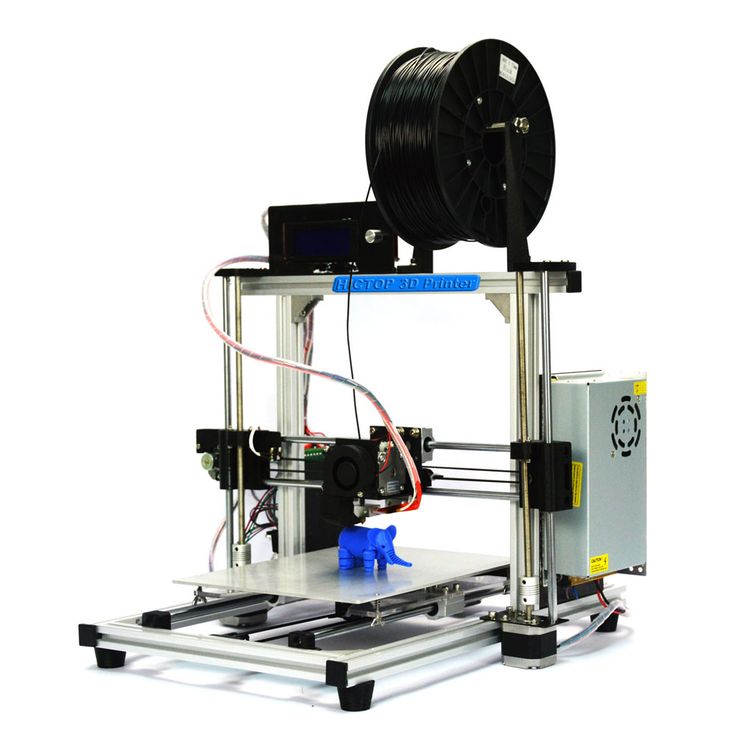 Technologies like CLIP (DLS) are being developed by Carbon, making the printing process even faster and more accurate than ever.
Technologies like CLIP (DLS) are being developed by Carbon, making the printing process even faster and more accurate than ever.
If you check the offers of our online 3D printing service, you will find a wide-range of materials from strong and accurate 3D printed resins such as Rigid Polyurethane, to 3D printed flexible plastic, and heat resistant 3D printed metals: everything is now printable, making it easy for companies to find materials adapted to their needs and products.
New 3D printing materials are being explored every day, from Daniel Kelly’s lab who’s 3D printing bone to the French startup XtreeE, who’s 3D printing concrete to revolutionize the construction industry! Indeed, regarding architecture application, 3D printing concrete is now a real thing, and families are starting to move into 3D printed houses. The first family to move into a 3D printed house actually did in 2018. The house is 1022 square feet, is perfectly habitable and took two days to print.
To resume:
2010: Urbee is the first 3D printed prototype car presented
2011: Cornell University began to build 3D food printer.
2012: The first prosthetic jaw is printed and implanted
2013: “3D printing” in Obama’s State of the Union speech
2015: Carbon 3D issues their revolutionary ultra-fast CLIP 3D printing machine
2016: Daniel Kelly’s lab announces being able to 3D print bone
2018: The first family moves into a 3D printed house
The 2020s: the arriving of more advanced Additive Manufacturing materials
Additive manufacturing is now offering the possibility to create parts for demanding sectors using advanced materials such as extremely resistant and rigid materials, or professional flexible plastics: we call them high performance materials. It is also a way to implement more sustainable manufacturing using bio-based materials, with a series of Nylon PA11 materials. BASF and Sculpteo are combining their strengths to offer you these high-performance materials and help you go even further in your projects.
Some of these impressive materials are offering thermal resistance, chemical resistance, or even heat resistance for the most demanding applications.
You can try out some interesting materials such as Ultrasint® PA11 ESD and its electrostatic discharging properties, Ultrasint® PA11 CF reinforced with carbon fibers for more rigidity, Ultrasint® PA11 & MJF PA11 bio-based powders with great resistant properties, Ultrasint® PA6 FR a flame-resistant material, Ultrasint® PA6 MF mineral filled for more resistance, Ultrasint® TPU88A & TPU01 for resistance and flexibility
What about the future?
We can see today that 3D printing is revolutionizing big sectors such as automotive, architecture or medical. But where can this technology still improve?
3D Bioprinting is becoming a big subject for the medical field. Indeed, applications of 3D bioprinting could be numerous. You can easily see the diverse advantages of this technology. It could create human tissue for burn victims. It is also a way to create human organs, in order to perform organ transplants. We can see today that there is not enough donors and bioprinting could be an excellent, fast, and life saving solution.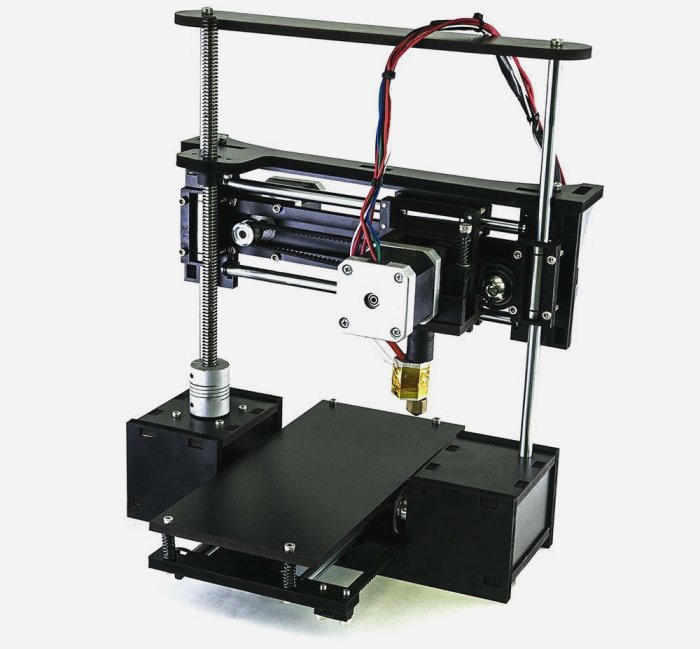 The 3D bioprinting technology could allow to create various tissue structures, such as kidney tissue, skin tissue.
The 3D bioprinting technology could allow to create various tissue structures, such as kidney tissue, skin tissue.
3D printing for architecture is also improving, but could really become bigger in the upcoming years. Projects faster to build, cheaper, and that avoid material waste: the benefits of this technology for the construction sector are numerous.
3D printing hasn’t reached its limits and many projects and amazing stories are waiting to be written. We already imagine this future in our article on the innovations to come in 3D printing and the top 10 materials 3D printing materials of the future that already exist!
Are you ready to write the future of 3D printing history, and improve your manufacturing process? Start your 3D printing project now. upload your 3D file here and choose among our 3D printing materials catalog to make the most of our 3D printing service.
Voir aussi:
- Return to Top
Get the latest 3D printing news delivered right to your inbox
Subscribe to our weekly newsletter to hear about the latest 3D printing technologies, applications, materials, and software.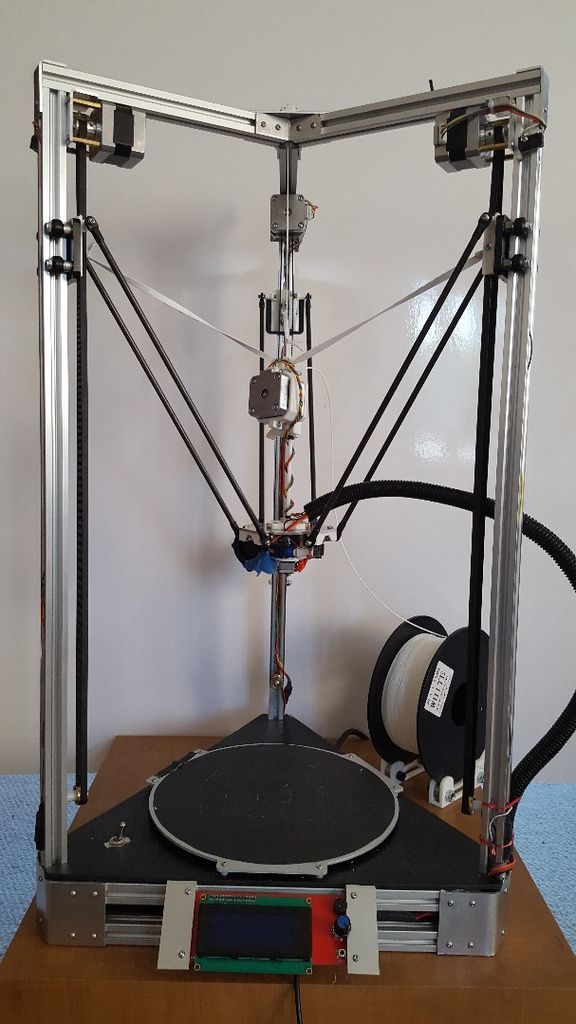
The second part of the 3D printing guide for beginners. Timeline of 3D printing
The birth of modern 3D printing. 1980-1990
The earliest modern 3D printing technologies first appeared in the late 1980s, at which time they were called Rapid Prototype (RP) technologies - RapydPrototype (RP). This is because processes were originally conceived as a fast and cost-effective way to create prototypes for industrial product development.
Interestingly, the very first patent application for PSU technology was filed by Dr. Kodama in Japan in May 1980. Unfortunately for Dr. Kodama, the full patent specification was not filed until one year after application, which is particularly unfortunate given that he was a patent lawyer.
Hideo Kodama (Hideo Kodama)
In reality, however, 3D printing started in 1986, when the first stereolithography apparatus (SLA) patent was issued. This patent belonged to Charles (Chuck) Hull, who first invented the SLA machine at 1983 year. Hull continued to collaborate with 3D Systems Corporation, one of the largest and most prolific organizations active in the 3D printing sector today.
Hull continued to collaborate with 3D Systems Corporation, one of the largest and most prolific organizations active in the 3D printing sector today.
3D Systems created its first commercial SLA-1 rapid prototyping system in 1987 and, after extensive testing, sold it in 1988. However, despite the fact that SLA technology may claim the first place in the history of 3D printing, it was not the only rapid prototyping technology at this time. At 19In 1987, Carl Deckard, who worked at the University of Texas, applied for a US patent for selective laser sintering (SLS-Selective Laser Sintering). This patent was issued in 1989 and SLS was later licensed from DTM Inc. and subsequently acquired by 3D Systems. Also in 1989, Scott Crump, co-founder of Stratasys Inc., applied for a patent for FDM-Fused Deposition Modeling technology, which the company still owns today, the technology used today by many entry-level printers. open source level RepRap (Replicating Rapid Prototyper). The FDM patent was issued to Stratasys in 1992 in Europe.
Scott Crump Co-founder of Stratasys
In 1989, Hans Langer founded EOS GmbH in Germany. After playing around with SL technology, EOS shifted its focus to SLS technology. Today, EOS is recognized worldwide for the quality of its products for industrial prototyping. In 1990, EOS sold its first Direct Metal Laser Sintering (DMLS) stereo system in cooperation with Electrolux Finland, which was later acquired by EOS.
Other 3D printing technologies emerging in these years include Ballistic Particle Manufacturing (BPM) originally patented by William Masters, Laminated Object Manufacturing (LOM) patented by Mikhail Feigin, masked stereolithography ( SGS - Solid Ground Curing), patented by Itzhak Pomeranz and three-dimensional printing (3DP), patented by Emanuel Sachs. So in the early nineties, there was an increase in the number of competing companies in the rapid prototyping market, but only three of them have survived to this day - 3D Systems, EOS and Stratasys.
Development of various 3D printing technologies. 1990-2000
Throughout the 1990s and into the early 2000s, many new technologies continued to be introduced, but they all remained exclusively focused on industrial production. Through research and development (R&D), more advanced technology has been introduced for specific casting tools. This marked the beginning of a new terminology, namely high-speed machining (RT-Rapid Tooling), rapid casting (Rapid Casting) and rapid production (RM-Rapid Manufacturing).
So in 1996 SandersPrototype (later Solidscape) and ZCorporation were created, in 1997 - Arcam, Objet Geometries - in 1998, in 2000 MCP Technologies introduced the technology of selective laser melting (SLM), in 2002 EnvisionTec was founded, In 2005, ExOne was established as a subsidiary of Extrude Hone Corporation and SciakyInc. introduced its pioneering additive process based on patented electron beam welding technology.
All these organizations joined the ranks of Western companies operating in the world market.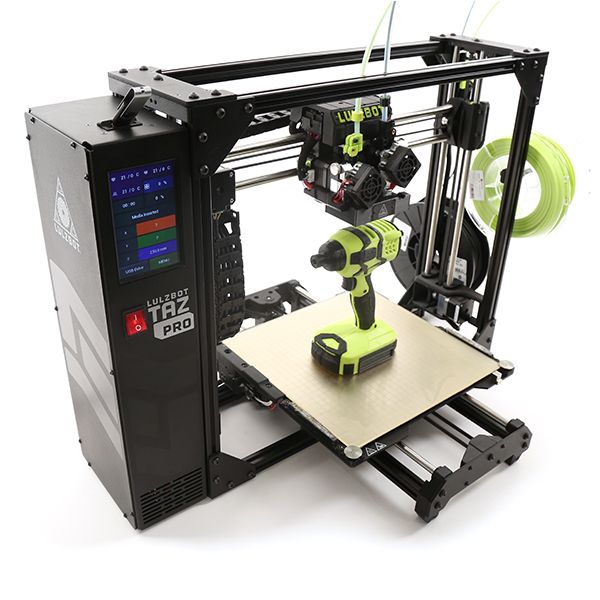 Terminology has also evolved with the spread of manufacturing applications, and a common term for all technologies has been adopted - additive manufacturing (AM - Additive Manufacturing). It is noteworthy that at the same time there were many parallel processes in the Eastern Hemisphere, but in the end, all of them did not have a significant impact on the world market.
Terminology has also evolved with the spread of manufacturing applications, and a common term for all technologies has been adopted - additive manufacturing (AM - Additive Manufacturing). It is noteworthy that at the same time there were many parallel processes in the Eastern Hemisphere, but in the end, all of them did not have a significant impact on the world market.
The mid-2000s began to show signs of diversification in two specific areas of focus that are much more clearly defined today.
First of all, these are top-of-the-line 3D systems, still very expensive equipment that has been directed towards the production of high quality, high tech complex parts. The growth of this field continues to this day, but only now, after years of research and development, the results are becoming more visible when using technologies in the aerospace, automotive, medical and jewelry sectors. Much still remains behind closed doors and/or under non-disclosure agreements.
On the other hand, some manufacturers of 3D printing systems are directing their efforts towards the development and promotion of the concept of modellers, as they were called at the time. In particular, these were 3D printers that kept the focus on improving functional prototyping, which were designed specifically as office-friendly, cost-effective systems. This was the prelude to today's desktop printers. However, most of these systems were still being developed for industrial prototyping.
In particular, these were 3D printers that kept the focus on improving functional prototyping, which were designed specifically as office-friendly, cost-effective systems. This was the prelude to today's desktop printers. However, most of these systems were still being developed for industrial prototyping.
In hindsight, this was indeed the calm before the storm.
Opening 3D printing to the general public 2007 - ...
In the low-price segment, 3D printers are in the middle of the price range today, as price struggles have come along with incremental improvements in materials used, as well as printing speed and accuracy.
In 2007, the market saw the first $10,000 printers from 3D Systems, but they failed to achieve their intended goal. This was partly due to the system itself, partly to market influences. According to many industry insiders, users, and commentators, the holy grail at the time was getting a $5,000 3D printer as the key to opening up 3D printing technology to a wider audience.
For most of the year, the world was looking forward to the arrival of the long-awaited Desktop Factory, as many predicted that they would find the Holy Grail. However, the expectations were in vain, as production faltered in anticipation of the release. Desktop Factory, led by Cathy Lewis, was acquired by 3D Sysytems in 2008, and that was it. As it turned out later, 2007 did become a turning point for the opening of 3D printing technology to a wide audience, although at that moment no one realized that the RepRap phenomenon had already taken root. Dr Bowyer conceived the concept of an open source, self-replicating RepRap 3D printer back in 2004. In the years that followed, the seeds gradually germinated, with major contributions from members of his Bath team, especially Vic Oliver and Rhys Jones, who developed the concept of working prototype 3D printers based on deposition modeling technology. In 2007, shoots began to appear, and the promotion of 3D printing to the masses began to gain momentum.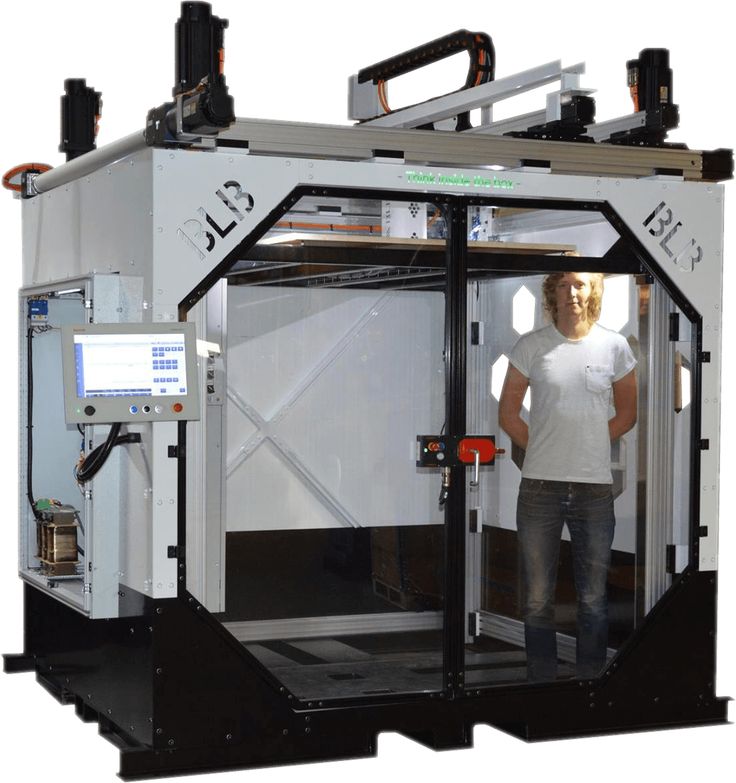
Adriano Bowyer (left) and Vik Olliver (right)
However, the first commercially available disassembled 3D printer based on the RepRap concept was only put up for sale in January 2009. It was a BfB RapMan 3D printer. MakerBot Industries closely followed this technology, the founders were actively involved in the development of the RepRap printer, until, due to extensive investments, they moved away from the philosophy of open source printers. In 2009, a lot of similar printers appeared, sold in various parts of the world, and this continues to this day. The RepRap phenomenon has spawned a new sector of entry-level commercial 3D printers.
2012 was the year of introducing alternative printing technologies to the entry level market. B9Creator with color LED projection technology (DLP-Digital Light Processing) appeared in June, and Form 1 in December. Both projects were launched with Kickstarter funding and both have been huge successes.
As a result of market divergence, significant shifts at the industry level, and a sharp increase in awareness, 2012 was also the year of the emergence of various media channels.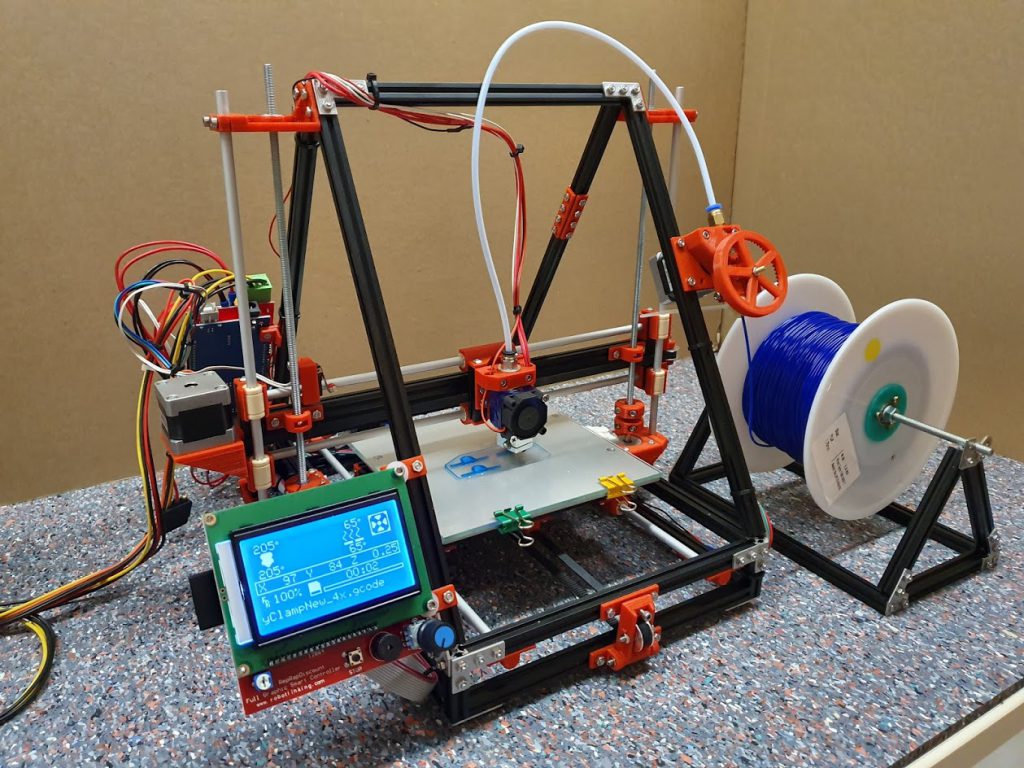 2013 was a year of significant growth and consolidation in 3D printing technology. One of the most notable events was the acquisition of MakerBot by Stratasys.
2013 was a year of significant growth and consolidation in 3D printing technology. One of the most notable events was the acquisition of MakerBot by Stratasys.
There is no denying the impact of 3D printing on the industrial revolution, it shows great potential for future consumers. We can only guess what form this potential will take, still unfolding before us.
3D printing technologies are developing every day, taking their place more and more firmly in many areas of our lives. 3D4U also does not stand still, and today is ready to offer you 3D printing services using FDM / FFF technologies and jewelry printing using DLP technology using the B9 3D printer described aboveCreator.
Flyingbear Tornado 2Pro finishing chronology
Technician
Flying Bear TORNADO
A couple of months ago I bought this 3D printer, and just the day before yesterday it printed decently. I will describe what I had to face and how I solved the problems.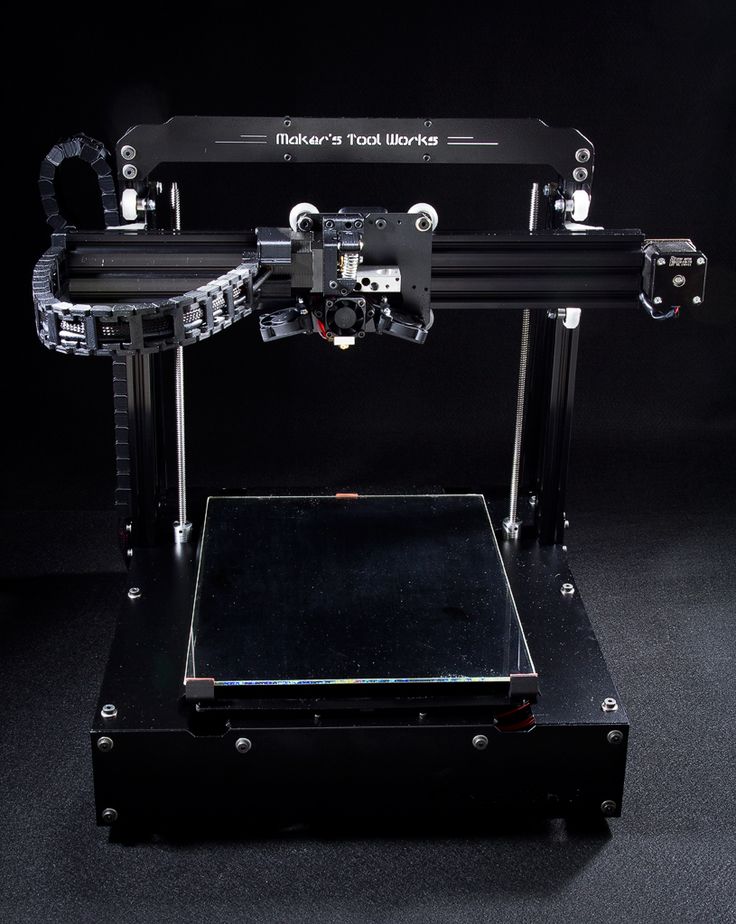 In reverse chronological order is .
In reverse chronological order is .
- Y-axis belts squeak.
- Inserted with washers 1 mm.
- Dismantled, cleaned the shaft with acetone, lubricated with Litol.
- I dismantled the heat shrink on the wire, bit off non-parallel.
- Removed all the heatsinks from the drivers, cleaned Thermal Via from the mask with a dremel, peeled off the sticker from the heatsinks, put the heatsinks on thermal paste, glued them with Cosmofen.
 I also put the Y-axis driver on the riser (since there was only one set of risers available and I also thought that the Y-axis was the most loaded). To the touch, the radiator on the modified driver heats up much more than on the standard one. So you did everything right.
I also put the Y-axis driver on the riser (since there was only one set of risers available and I also thought that the Y-axis was the most loaded). To the touch, the radiator on the modified driver heats up much more than on the standard one. So you did everything right.
 In such a situation, you need to increase the temperature, but on this printer this leads to artifacts. I decided to increase the melting zone.
In such a situation, you need to increase the temperature, but on this printer this leads to artifacts. I decided to increase the melting zone. - Installed (clone) Volcano fuser and nozzle 0.6
- XCR (Lerdge) 2-in-1 head installed, mount improved
- We are waiting for a CR-10 head with a titanium-coated thermal barrier, we will try
- There is a quality E3D Chimera clone with FullMetal tubes, we will try
- Replaced with clones Bondtech extruder - Trianglelab BMG Extruder

- Clean glass before printing 99% Isopropyl alcohol and ultra microfiber cloth
- Clean with acetone if that doesn't help
- Sticks best to a special sticker mat. Find a large enough and install
- PETG sticks no problem
- ABS naturally sticks with Raft and Brim, glue may need to be applied
- Total-Pro only sticks when blower is on.
- Nylon-Carbon from U3Print generally sticks well and the results are excellent.
- Modeled and printed in Nylon-Carbon holder/spigot for 40mm fan
- Needs airflow from 2 sides
- Head is heavy and does not dissipate heat well
- Designed and printed several iterations of the head, with airflow and servo breakdown. Using 1 fan on the heat sink instead of 2 on the old head
- Capacitive sensor not working properly. Sometimes it shows different heights, and sometimes it freezes and does not respond.
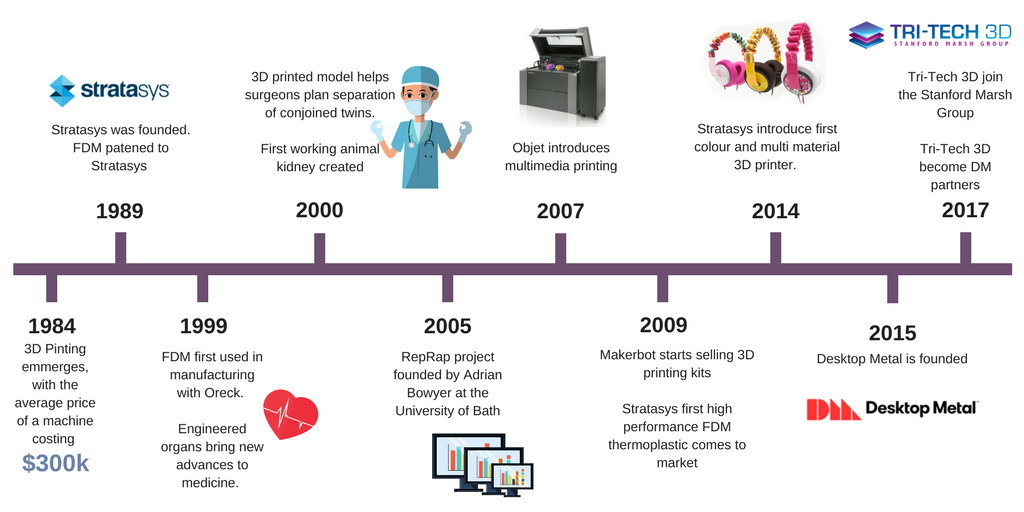
- Made a probe with a button (was included in the kit, not installed according to the instructions) on the servo drive.
- Probe moved from head to carriage
- Poor quality linear guides. The holes are not parallel to the edges of the rail (this did not impress the manufacturer). There was a crunch in all rail carriages and in 2 of the 4 bearings of the Z axis (this impressed the manufacturer)
- The manufacturer sent 3 rails (wrote that Hiwin;) and 2 bearings. Waiting, hoping
- Worm gear shafts are pre-bent. What causes wall unevenness when printing
- Removed lower worm gear bearings
- Replaced motor joints with rigid ones instead of spring ones
- TMC2208 drivers reduce the noise level from the motors. However, the way they are made (the boards are separated) does not allow using the UART. And I really want to
- Unused legs are thrown up, a resistor is soldered to separate the TX and RX lines, soldered directly to the chip
- When setting up the drivers, the MKS board was flashed, now the sensor of the finished filament on the first extruder does not work.
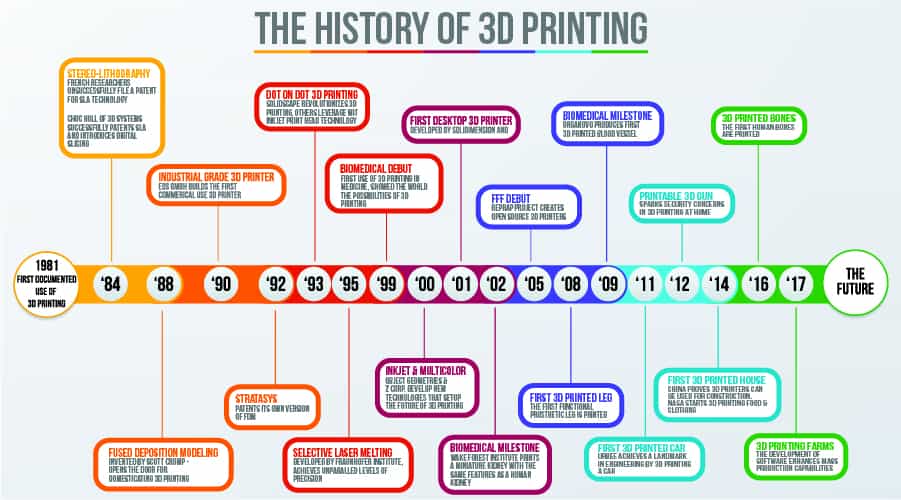
- Uncured
- Filament sensors are installed so that the plastic passes through them with a bend into the extruder. This can be avoided only by additional printing of spacers.
- When you stop printing and start a new one, the extruder takes a lot of filament out of the head and does not put it back in.
- Do power cycle
- The touchscreen is very convenient, many operations are done much faster than on ordinary ReprapDiscount controllers with an encoder. However, the BabyStep function is missing, loading the filament into the bowden (700mm). Haven't found how to add features yet, even with JZ Screen Editor.
- We execute using GCODE from the touchscreen menu
- When connecting the controller box, we once mixed up the head connector and the motor connector (they are the same). As a result, motor X burned out and the track on the printed circuit board to the limit switch
- The track is sealed
- I took the motor from the second extruder
- They immediately refused dual-extruder printing, they didn’t even try it.
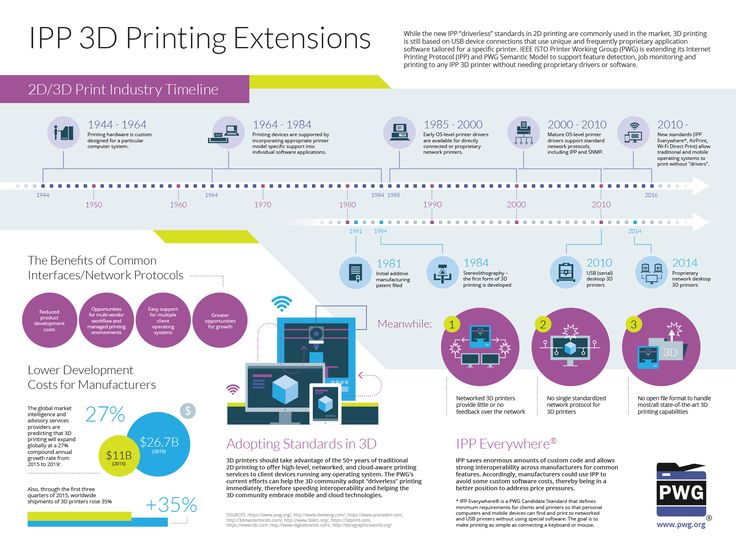 It is necessary to set up single-extruder printing, then take up double-extruder printing. In addition, on Chimera, in my experience, it is not possible to set up normal printing without artifacts.
It is necessary to set up single-extruder printing, then take up double-extruder printing. In addition, on Chimera, in my experience, it is not possible to set up normal printing without artifacts. - Standard thermal barriers require a Teflon tube (thick) to pass through them straight from the extruder to the nozzle. Naturally, the plastic hardens in the tube, you have to disassemble and clean it.
- Abandoned the whole standard head, put (for now) XCR 2-in-1
- One of the heads turned out to be 0.1 mm, although it is stamped 0.4. In one thermal barrier, there is, as it were, another barrier inside, random, so that the tube does not pass through it. It's good that they put a spare head assembly.
- PID Tuning not done from factory. It is very important here, since temperature jumps lead to sagging and stripes on the walls of the printed part.
- Did PID Tuning in Marlin a few times until I got a very flat heating line, ±2º
- The front door is designed with a gap on the right side.
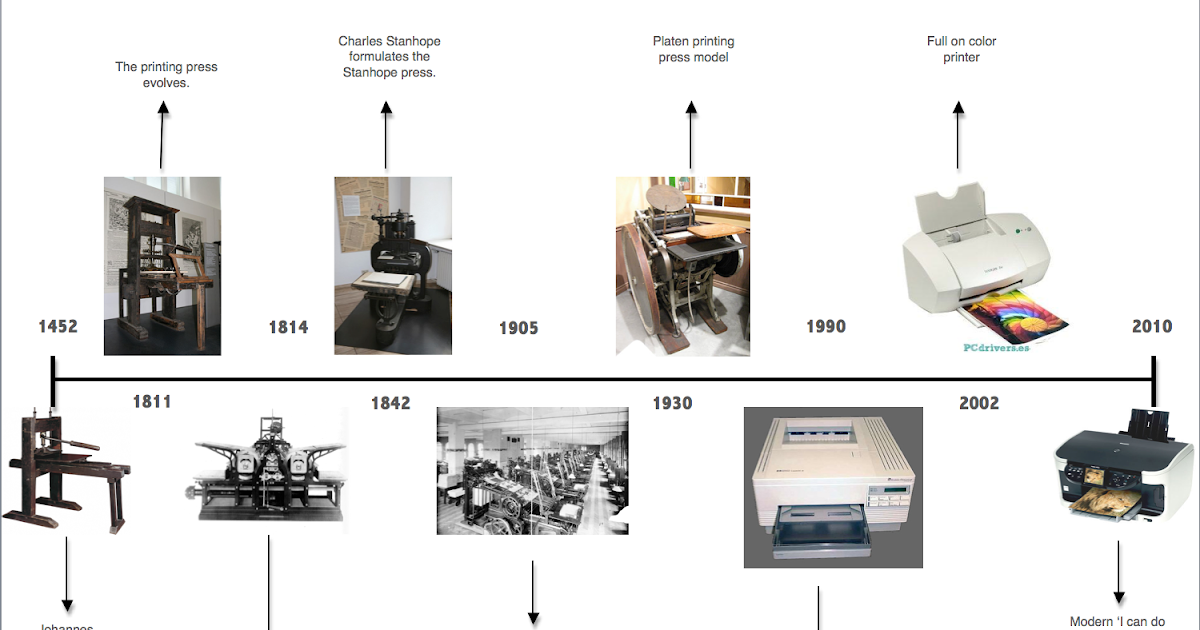
- Motor cable X hanging loose, not well thought out.
- It was like this:
A little good about this printer:
- Fast heating of everything thanks to a powerful power supply and hotbed insulation
- Convenient touchscreen. I doubted its usefulness as the printer walked towards me. It turned out to be much more convenient and faster than Reprapdiscount displays, which are in all other printers. In addition, it does not load the 8-bit processor on the MKS base with graphics and information, which could have a positive effect on print quality.
- Very quiet motors thanks to TMC2208 drivers. The drivers there are special, from MKS. They do not have a UART track at all, so of all their pleasant features, only silence is available to you. The problem is solved by soldering the leg directly to the chip with a thin wire and a 1k resistor on the adjacent leg. All drivers (except E1) managed to connect via UART to AUX-3 on MKS.
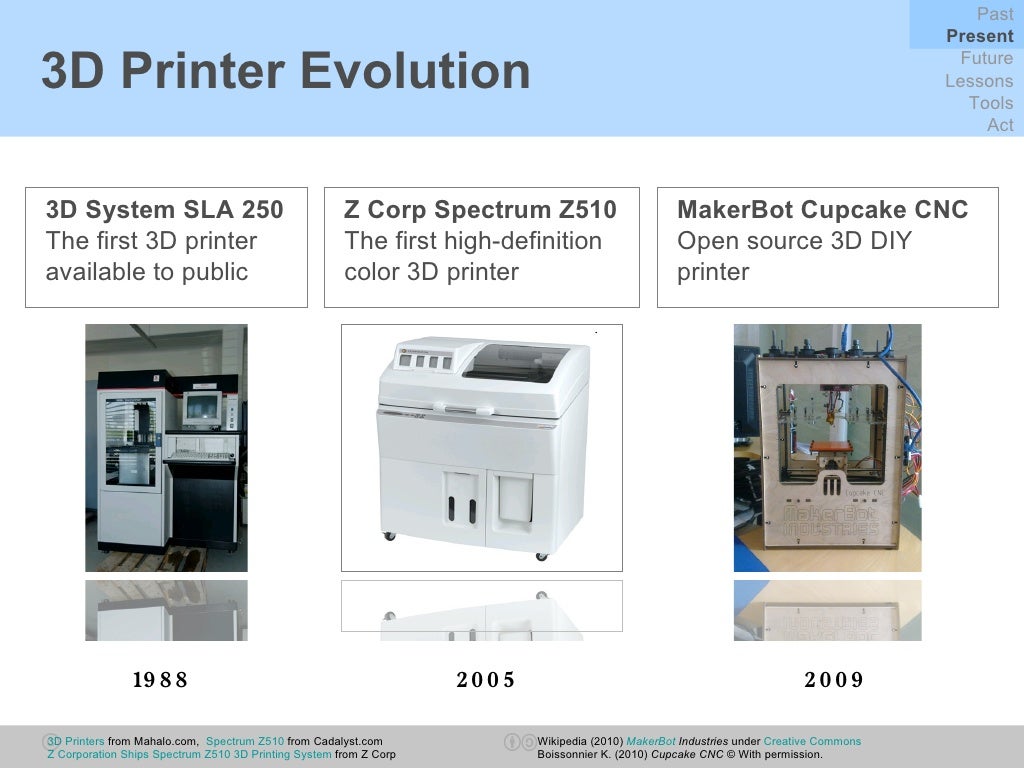
- E3D Titan clone extruders included.
- Open firmware for MKS Base board (Marlin) and touchscreen (JZ 3D printer Touch Screen Helper).
- MOSFET for heating Hotbed
- In a bag with the inscription Gift there is one more head (nozzle, thermal barrier, heating block, heater, temperature sensor), limit switch button module (apparently to make a normal servo sensor), a needle for cleaning the head.
- The metal case inspires optimism.
- The body walls are a useful thing, they really keep the temperature.
Conclusion:
For the price it was hard to expect a really working machine. Rather, it is a luxurious set of low-quality parts, a designer, the basis of a better printer. I advise people with a lot of free time and experience in servicing 3D printers to take it.
Of course, there are cheaper printers that work “out of the box” (for example, Anycubic Kossel Linear Plus), but in Tornado I was bribed by the design, volume, walls.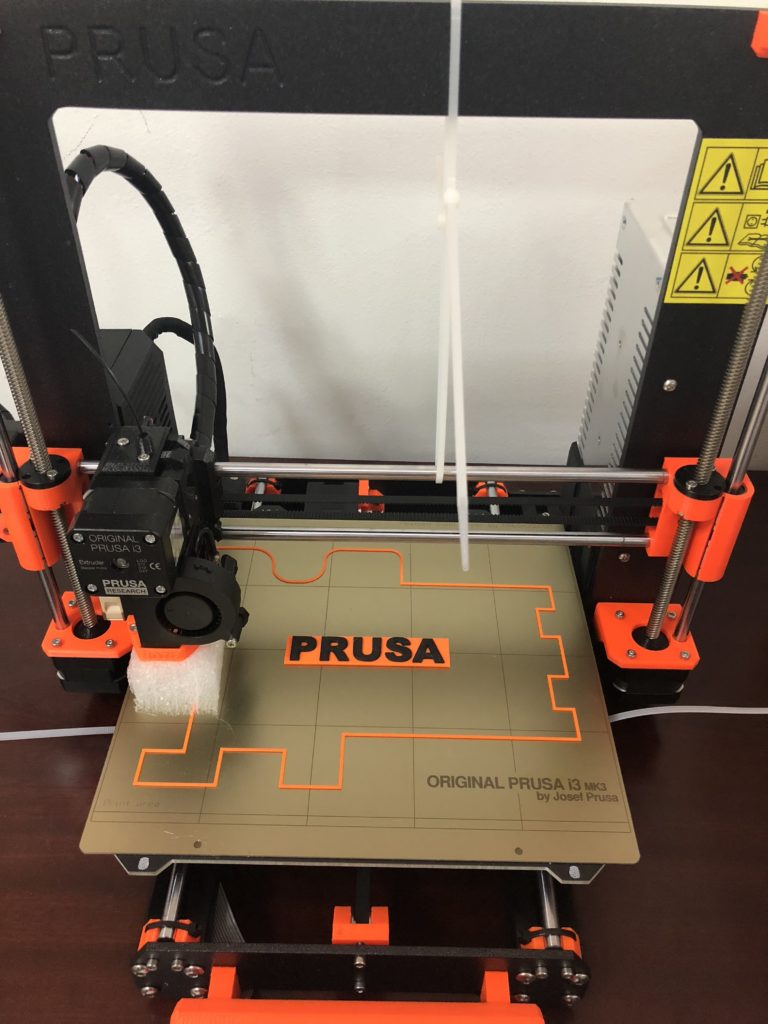 I did not pay attention to the touchscreen, but it pleasantly surprised me.
I did not pay attention to the touchscreen, but it pleasantly surprised me.
Assembly time: 2 days. Setting time: 2 months.
The printer surprises me every day. There is no more strength to finish it. But when it sealed well, it was a holiday.
Follow author
Follow
Don't want
7
Article comments
More interesting articles
thirty
Subscribe to the author
Subscribe
Don't want to
During one of the attacks of perfectionism, I decided once and for all to get rid of the problem of fi...
Read more
nik_vr
Loading
11/18/2022
536
3
Subscribe to the author
Subscribe
Don't want
Someone probably remembers the story of how 42 schools in the Kirov region were brought.


